Tom's Hardware Verdict
The MSI MEG Ai1000P PCIe 5 is among the best 1000W Platinum PSUs you can find in today's market. On top of that, it is ATX v3.0 and PCIe 5.0 ready.
Pros
- +
Full power at 47 degrees Celsius
- +
High overall performance
- +
Properly operating protection features
- +
Semi-digital platform
- +
Good build quality
- +
Great transient response
- +
Not noisy under normal operating conditions
- +
Tight load regulation on the minor rails
- +
Efficient at super-light loads
- +
Long hold-up time
- +
Low inrush current with 230V
- +
Low vampire power
- +
Fully modular
- +
Loads of connectors, including 12VHPWR
- +
Adequate distance between the peripheral connectors
- +
Compatible with the alternative sleep mode
- +
10-year warranty
Cons
- -
Increased noise under stressful conditions
- -
Average efficiency with light loads
- -
PF with 230V could be higher
- -
Load regulation could be tighter at 12V
- -
5VSB efficiency needs boosting
- -
High inrush current with 115V
Why you can trust Tom's Hardware
The MSI MEG Ai1000P PCIe5 achieves top performance, and the fact that it is ATX 3.0 and PCIe 5.0 ready brings it to the newest standards. That combination earns it a place in our best PSUs article. It achieves almost similar performance to the Seasonic Prime Platinum 1000 and the EVGA SuperNOVA 1000 P6, but none of those units have 12VHPWR connectors, nor are they ATX 3.0 compatible.
Besides ATX 3.0 and PCIe 5.0 compatibility, the MSI MEG Ai1000P PCIe 5 also has an interesting (we could say appealing) exterior design. Thanks to the semi-digital platform that the PSU uses, provided by Channel Well Technology, there is compatibility with the MSI Gaming Intelligence application, through which you can adjust several settings, like the fan's speed and toggle on/off the single +12V mode while monitoring the PSU's vital functions and power delivery.
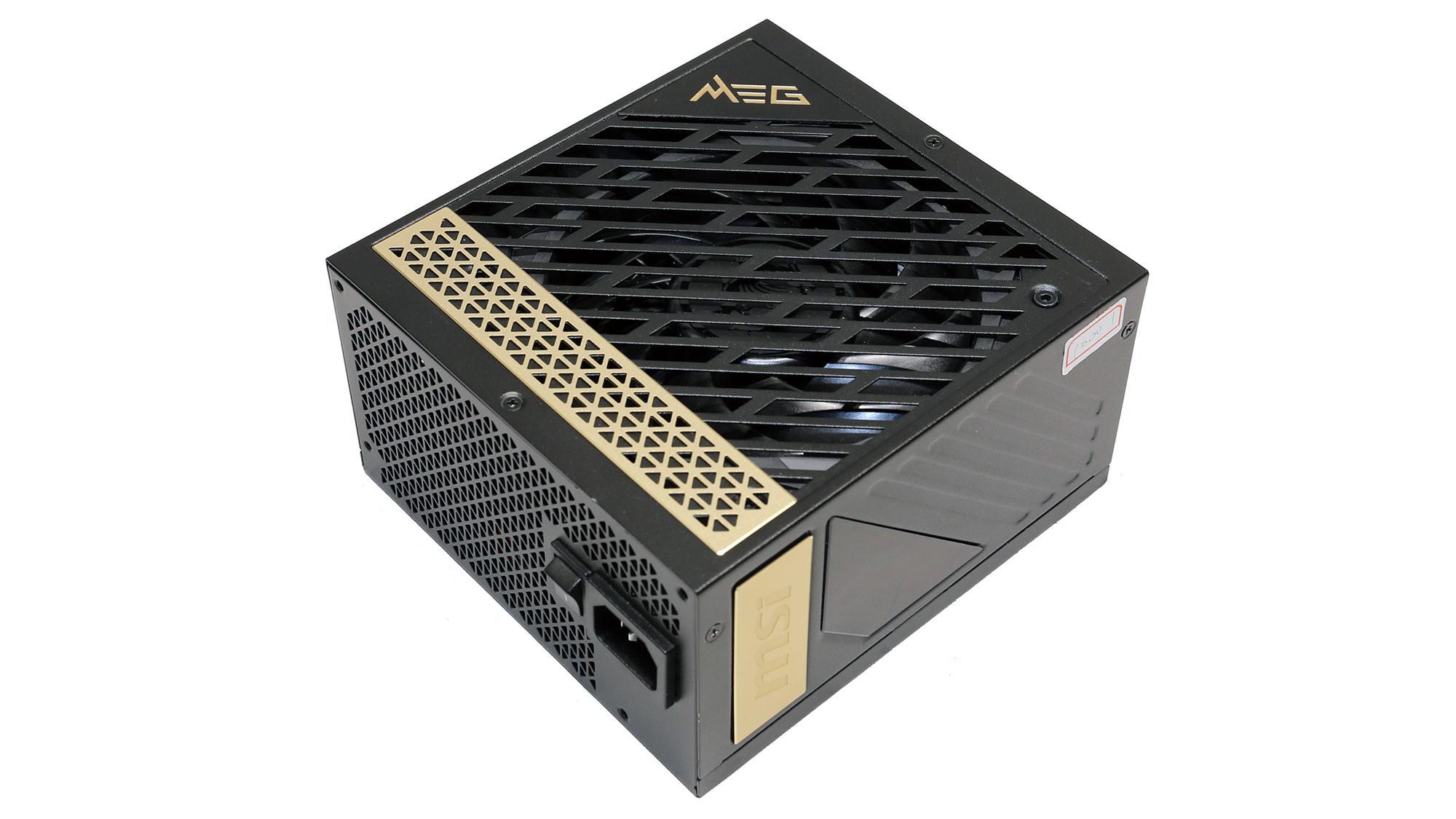
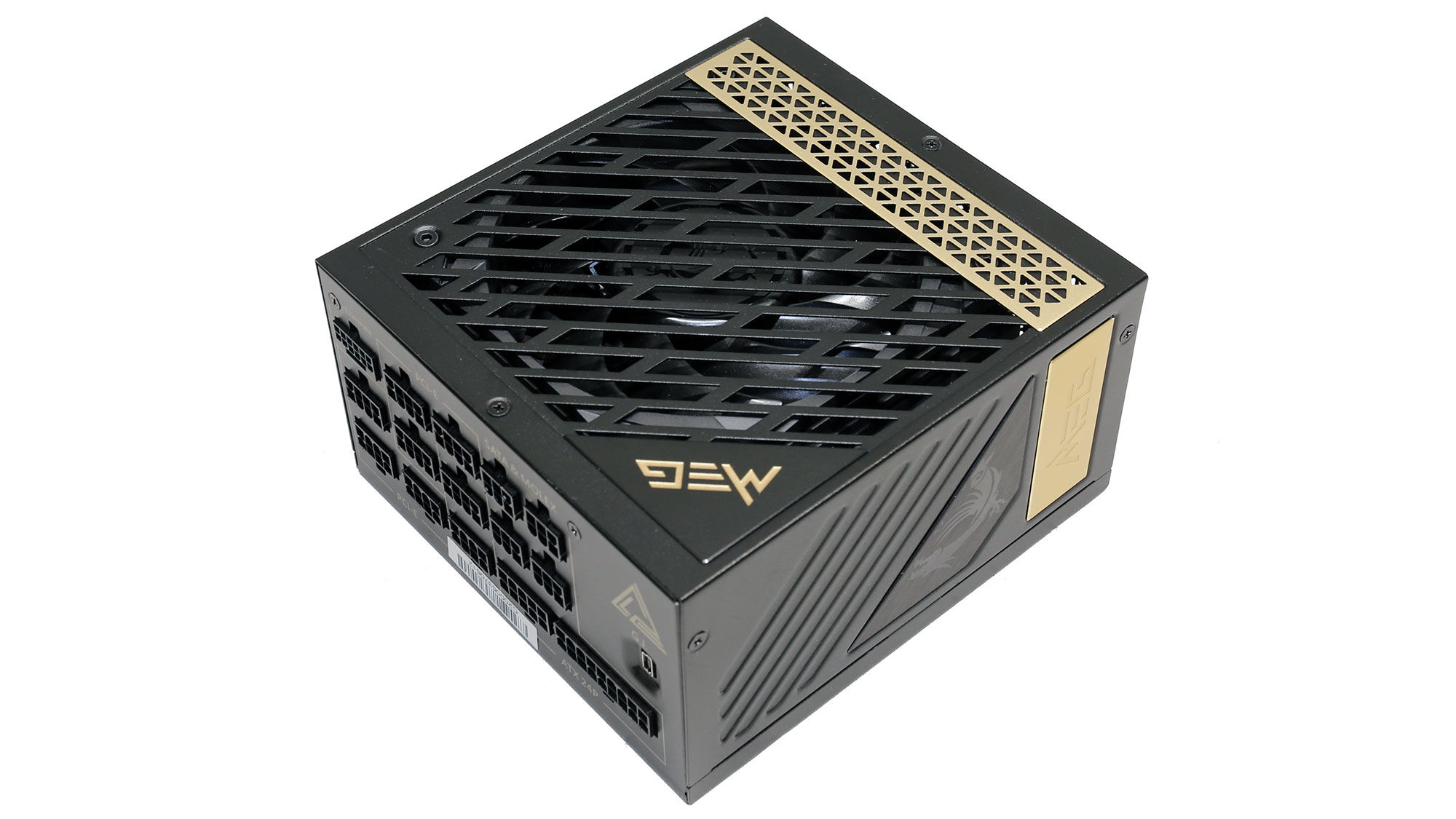

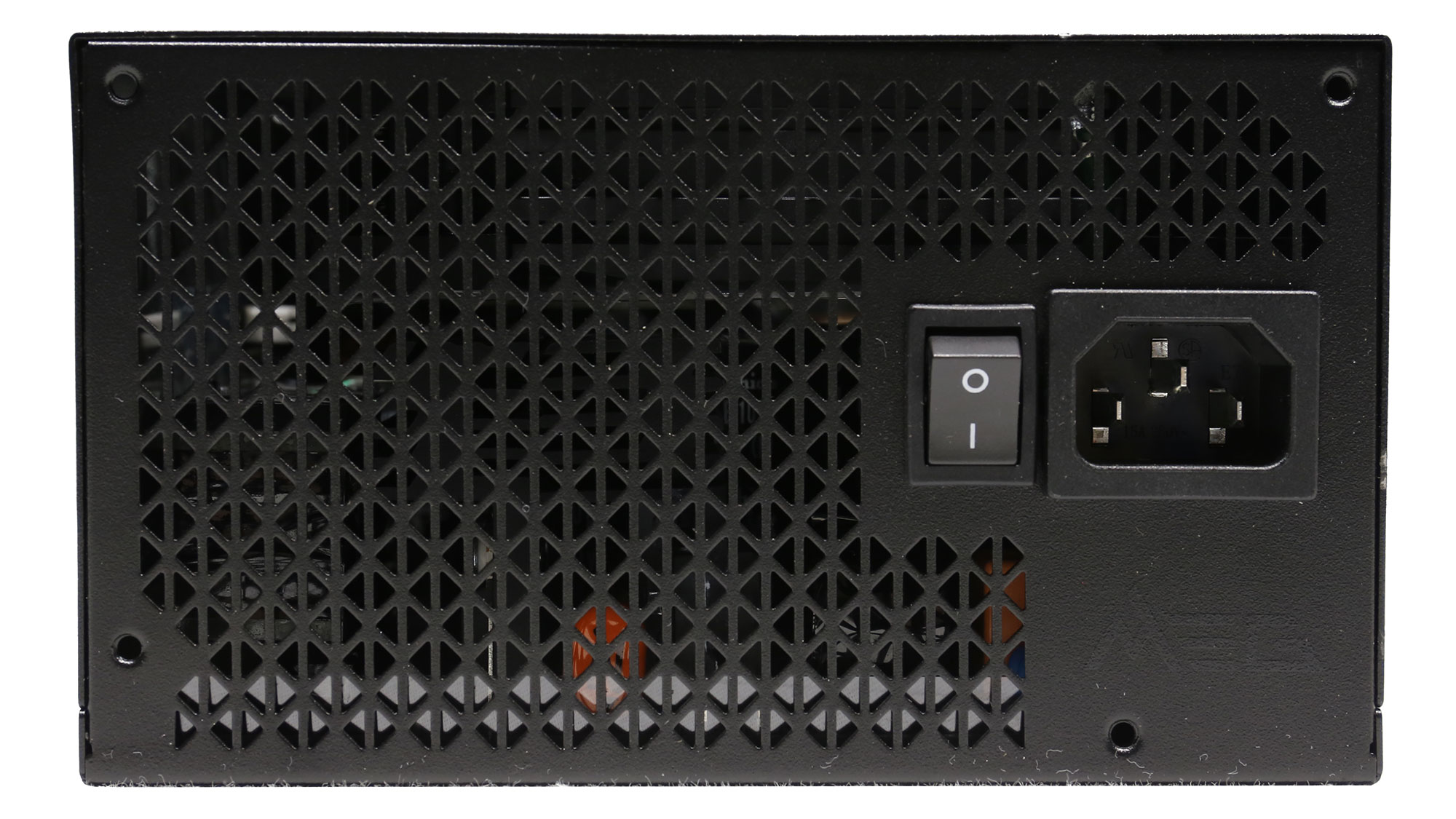
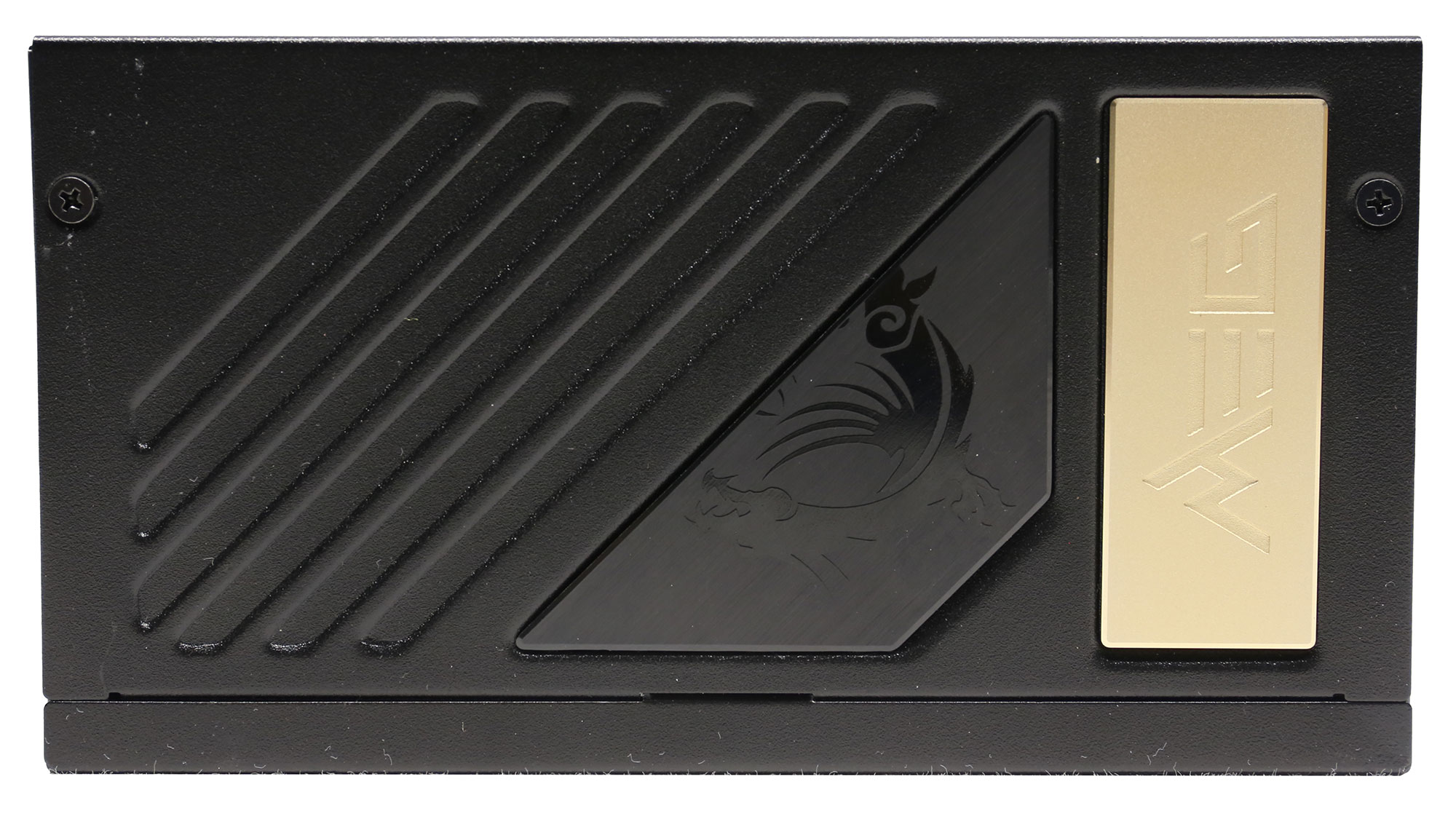
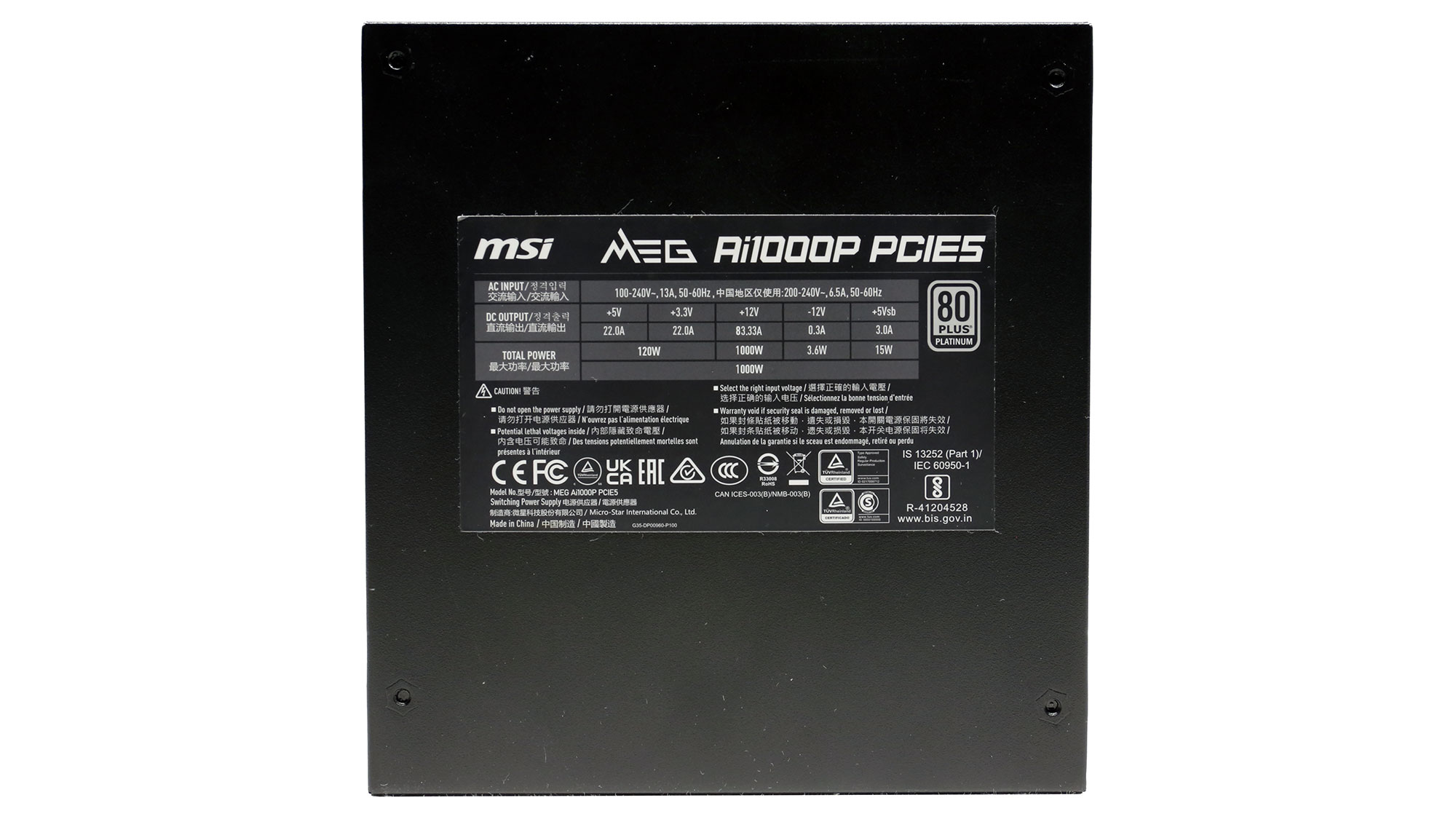
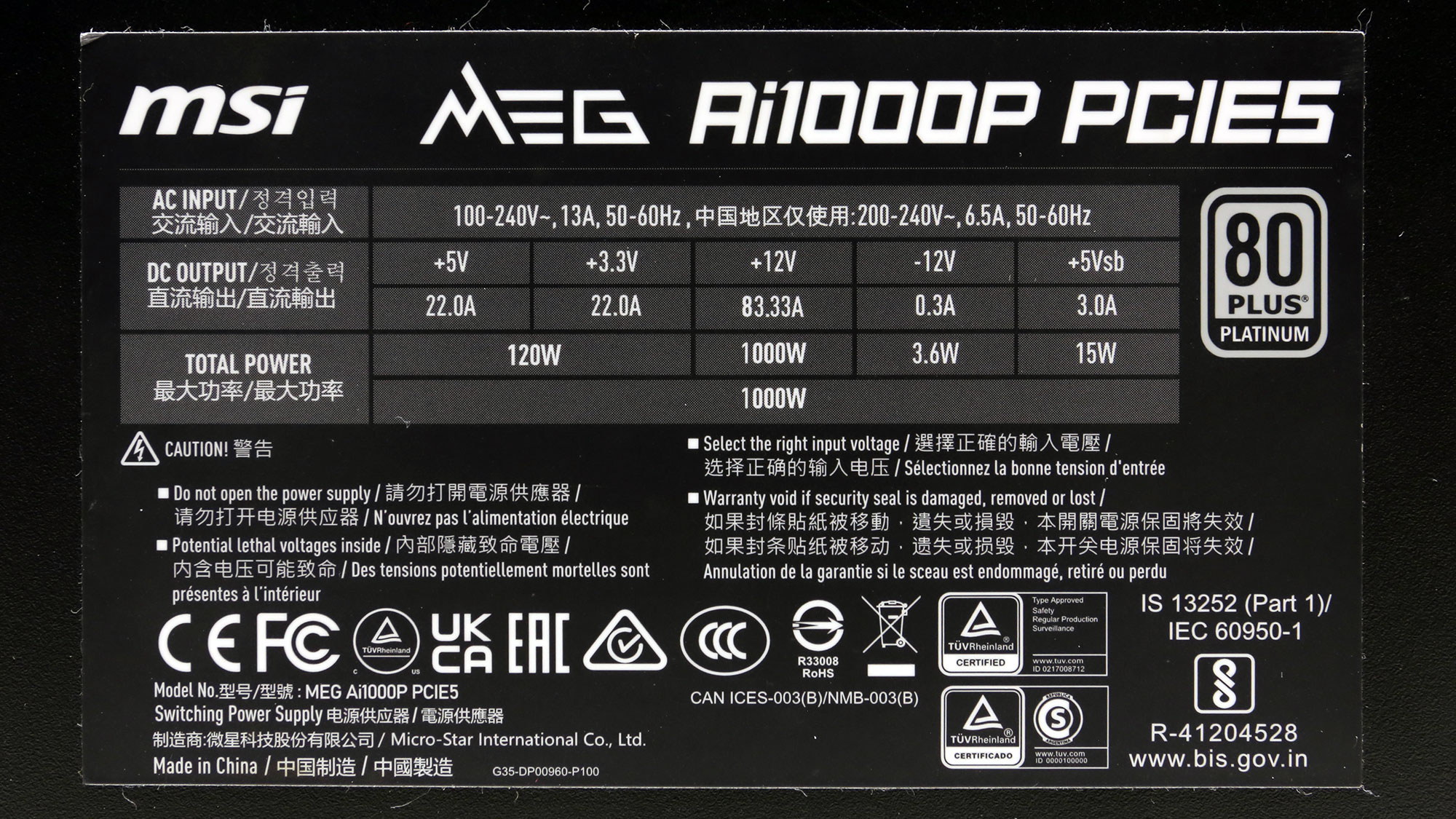
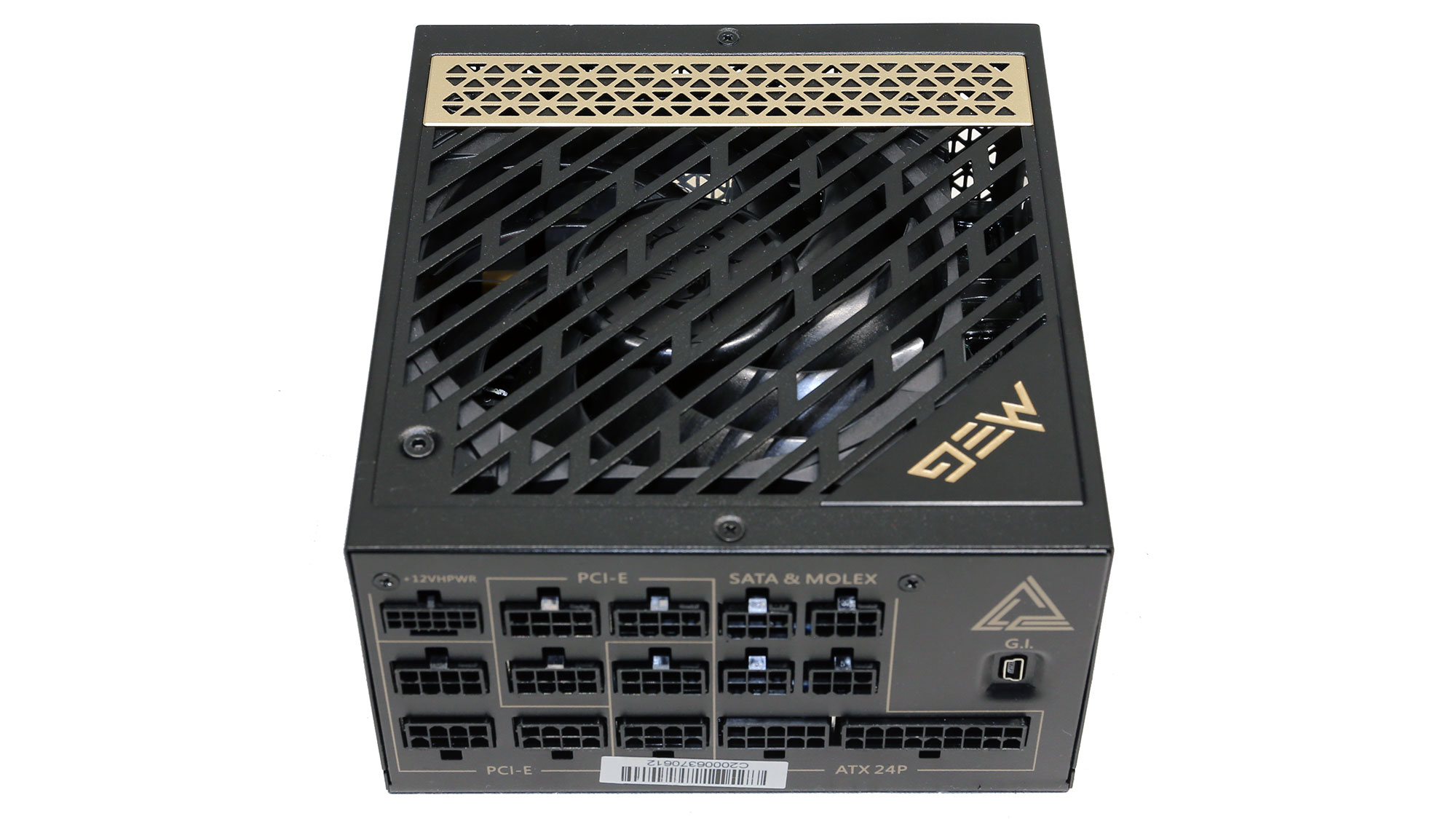
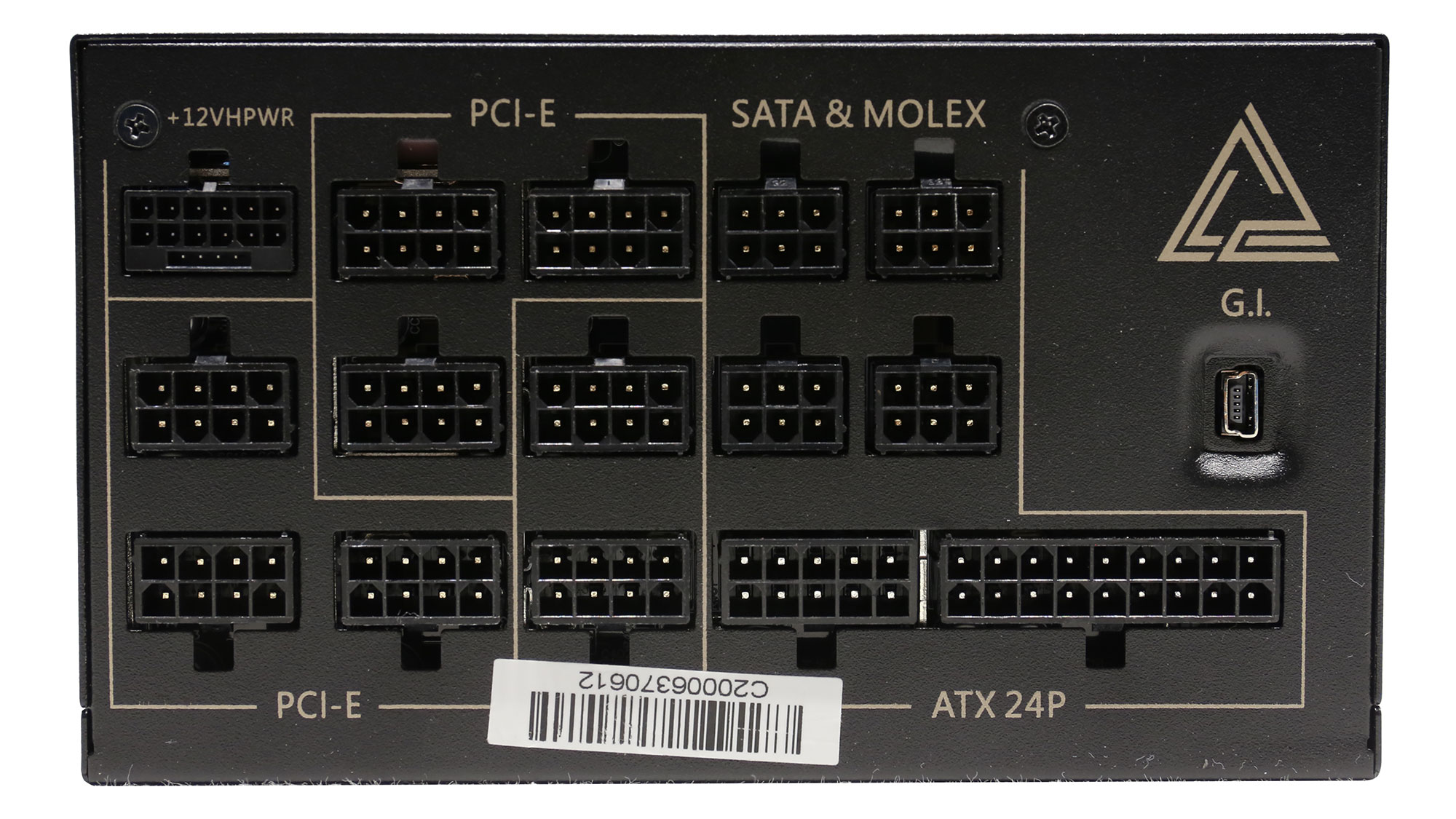


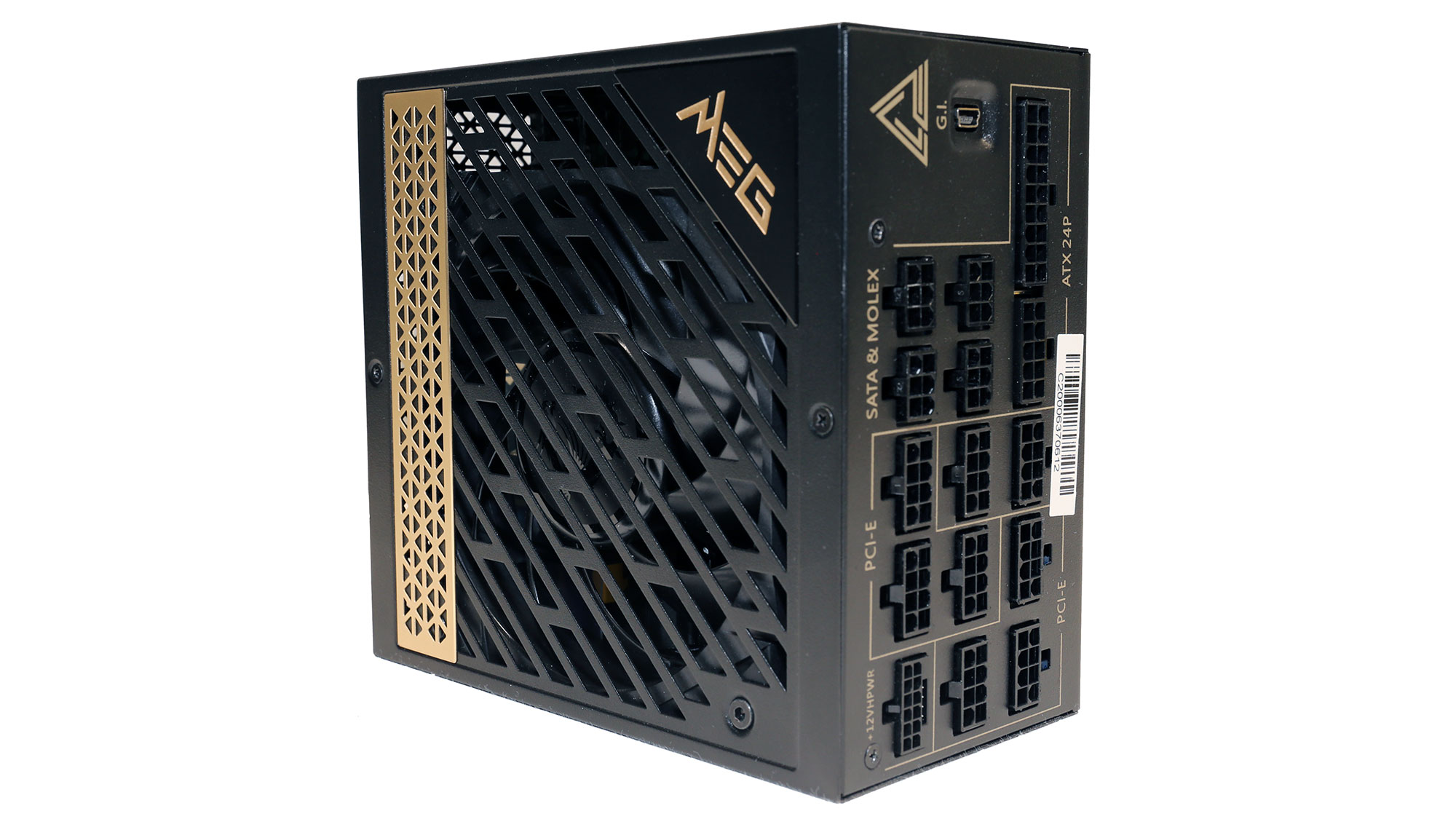
The MEG Ai1000P PCIe5 has a fully modular cable design and compact enough dimensions, given its capacity, measuring 160mm in depth. MSI could go with a larger fan than the 120mm it used, to keep the noise output low. Nonetheless, the fan's build quality is high, and the product's warranty is extended at ten years to match the competition's offerings.
Specifications
| Manufacturer (OEM) | CWT |
| Max. DC Output | 1000W |
| Efficiency | 80 PLUS Platinum, Cybenetics Platinum (89-91%) |
| Noise | Cybenetics Standard++ (30-35 dB[A]) |
| Modular | ✓ (fully) |
| Intel C6/C7 Power State Support | ✓ |
| Operating Temperature (Continuous Full Load) | 0 - 50°C |
| Over Voltage Protection | ✓ |
| Under Voltage Protection | ✓ |
| Over Power Protection | ✓ |
| Over Current (+12V) Protection | ✓ |
| Over Temperature Protection | ✓ |
| Short Circuit Protection | ✓ |
| Surge Protection | ✓ |
| Inrush Current Protection | ✓ |
| Fan Failure Protection | ✗ |
| No Load Operation | ✓ |
| Cooling | 120mm Hydraulic Bearing Fan (PLA12025S12H) |
| Semi-Passive Operation | ✓ |
| Dimensions (W x H x D) | 150 x 85 x 160mm |
| Weight | 1.99 kg (4.39 lb) |
| Form Factor | ATX12V v3.0, EPS 2.92 |
| Alternative Low Power Mode (ALPM) compatible | ✓ |
| Warranty | 10 Years |
Power Specifications
| Rail | Row 0 - Cell 1 | 3.3V | 5V | 12V | 5VSB | -12V |
| Max. Power | Amps | 22 | 22 | 83.33 | 3 | 0.3 |
| Row 2 - Cell 0 | Watts | Row 2 - Cell 2 | 120 | 1000 | 15 | 3.6 |
| Total Max. Power (W) | Row 3 - Cell 1 | Row 3 - Cell 2 | 1000 | Row 3 - Cell 4 | Row 3 - Cell 5 | Row 3 - Cell 6 |
Cables & Connectors
| Description | Cable Count | Connector Count (Total) | Gauge | In Cable Capacitors |
|---|---|---|---|---|
| ATX connector 20+4 pin (600mm) | 1 | 1 | 16-20AWG | No |
| 4+4 pin EPS12V (710mm) | 2 | 2 | 18AWG | No |
| 6+2 pin PCIe (600mm) | 6 | 6 | 16AWG | No |
| 12+4 pin PCIe (610mm) | 1 | 1 | 16-24AWG | No |
| 2x 6+2 pin PCIe (610mm) | 1 | 2 | 18AWG | No |
| SATA (500mm+150mm+150mm+150mm) | 4 | 16 | 18AWG | No |
|
4 pin Molex (500mm+150mm+150mm+150mm) / FDD (+150mm) | 1 | 4 / 1 | 18-20AWG | No |
| USB Cable Mini to Type A (610mm) | 1 | 1 | 24-28AWG | No |
| USB Mini to Motherboard Header Cable (590mm) | 1 | 1 | 24-28AWG | No |
The PSU is equipped with connectors, including two EPS and six PCIe, all in dedicated cables. It also has two more PCIe on a single cable and a 12VHPWR connector able to handle up to 600W. According to the ATX spec, a 1000W PSU should have up to 450W 12VHPWR connector,
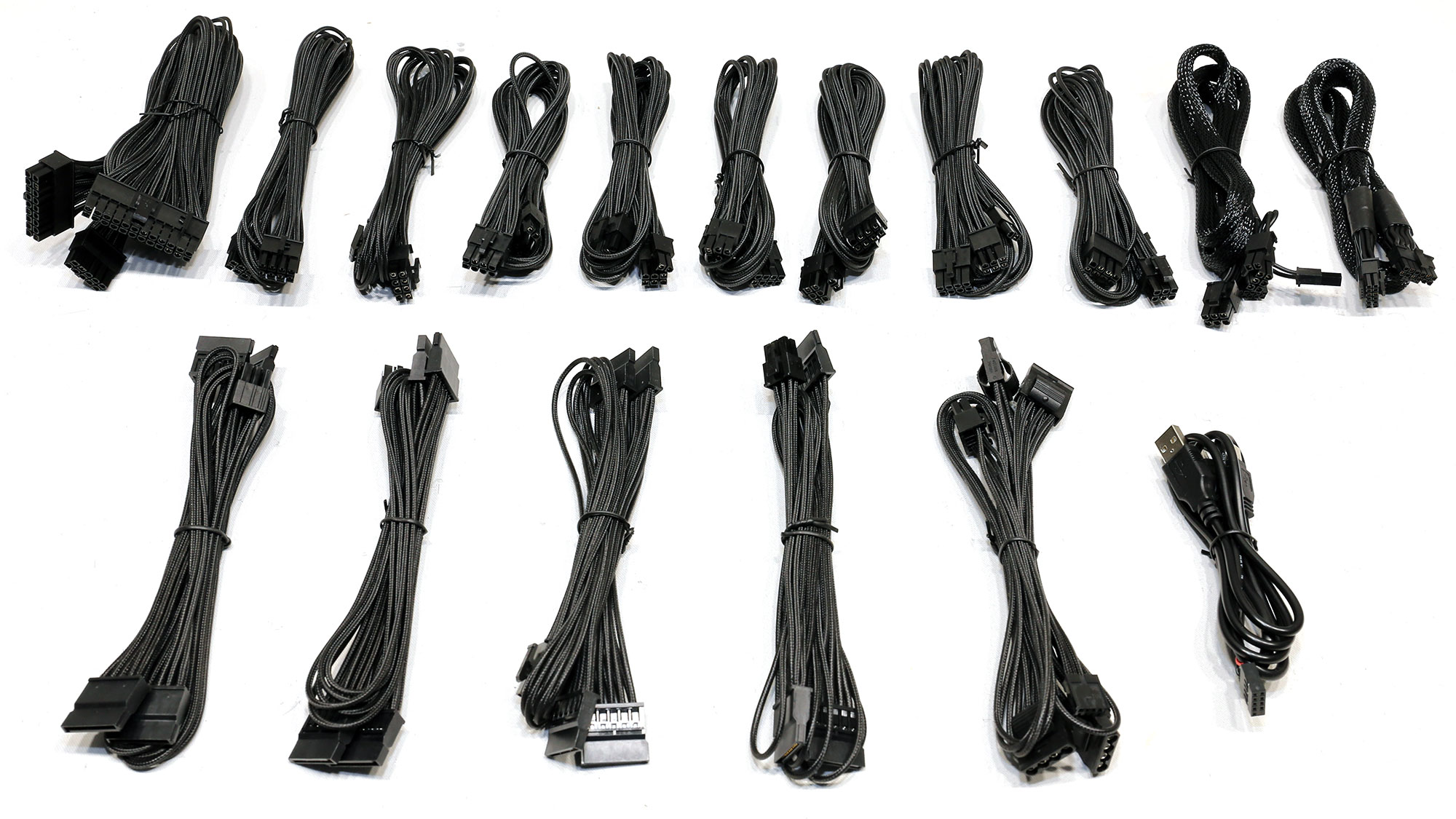

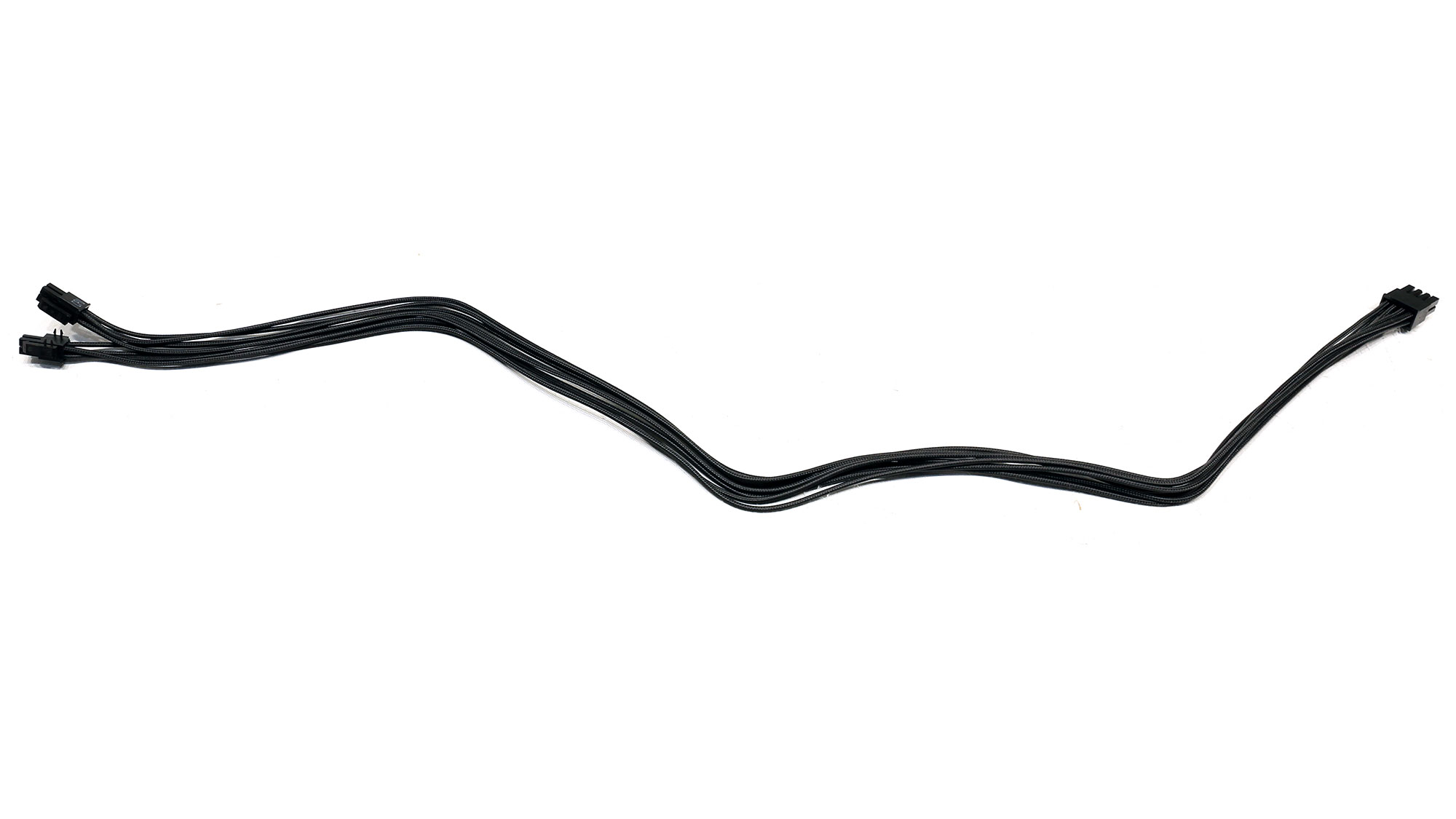
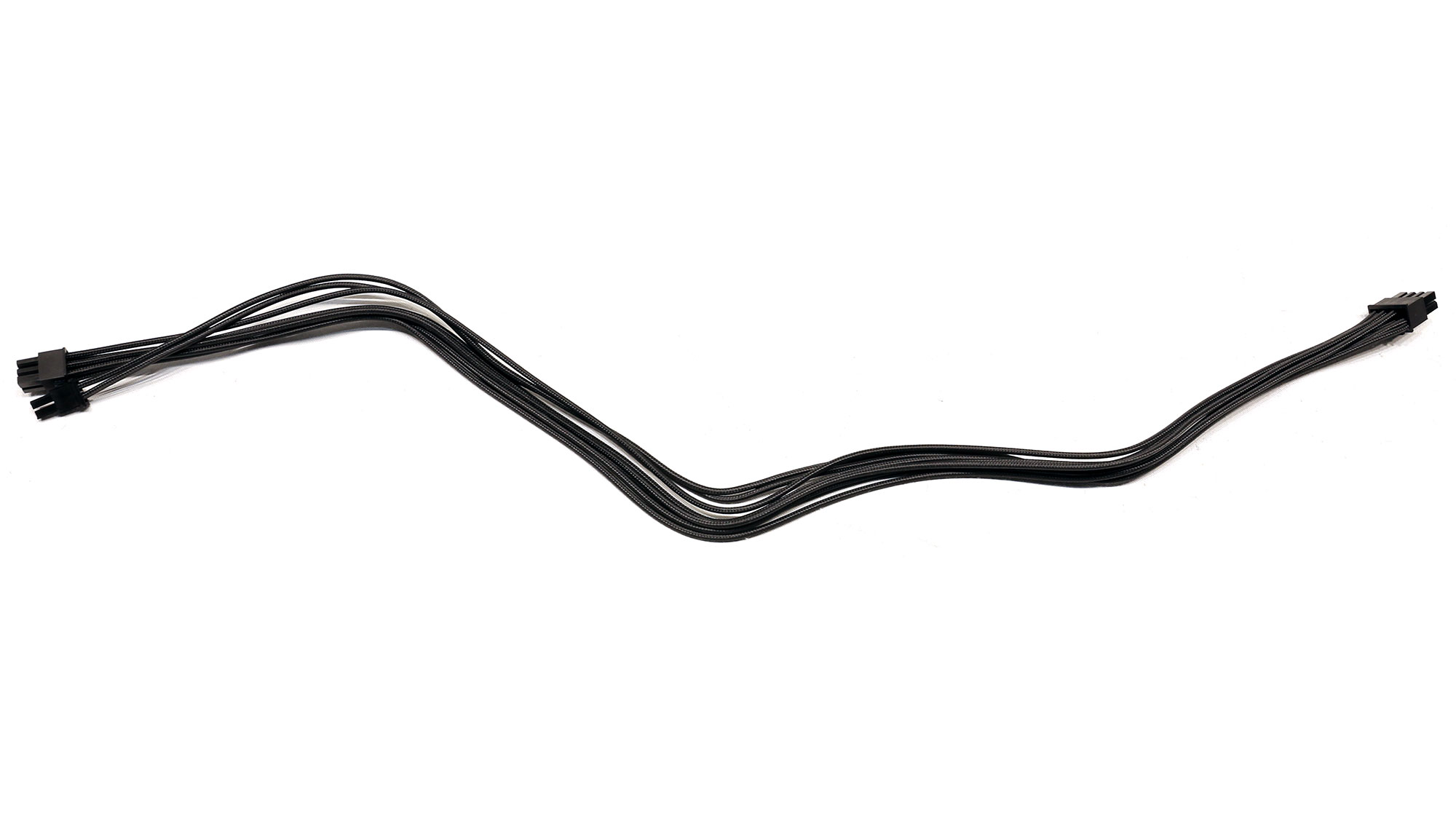

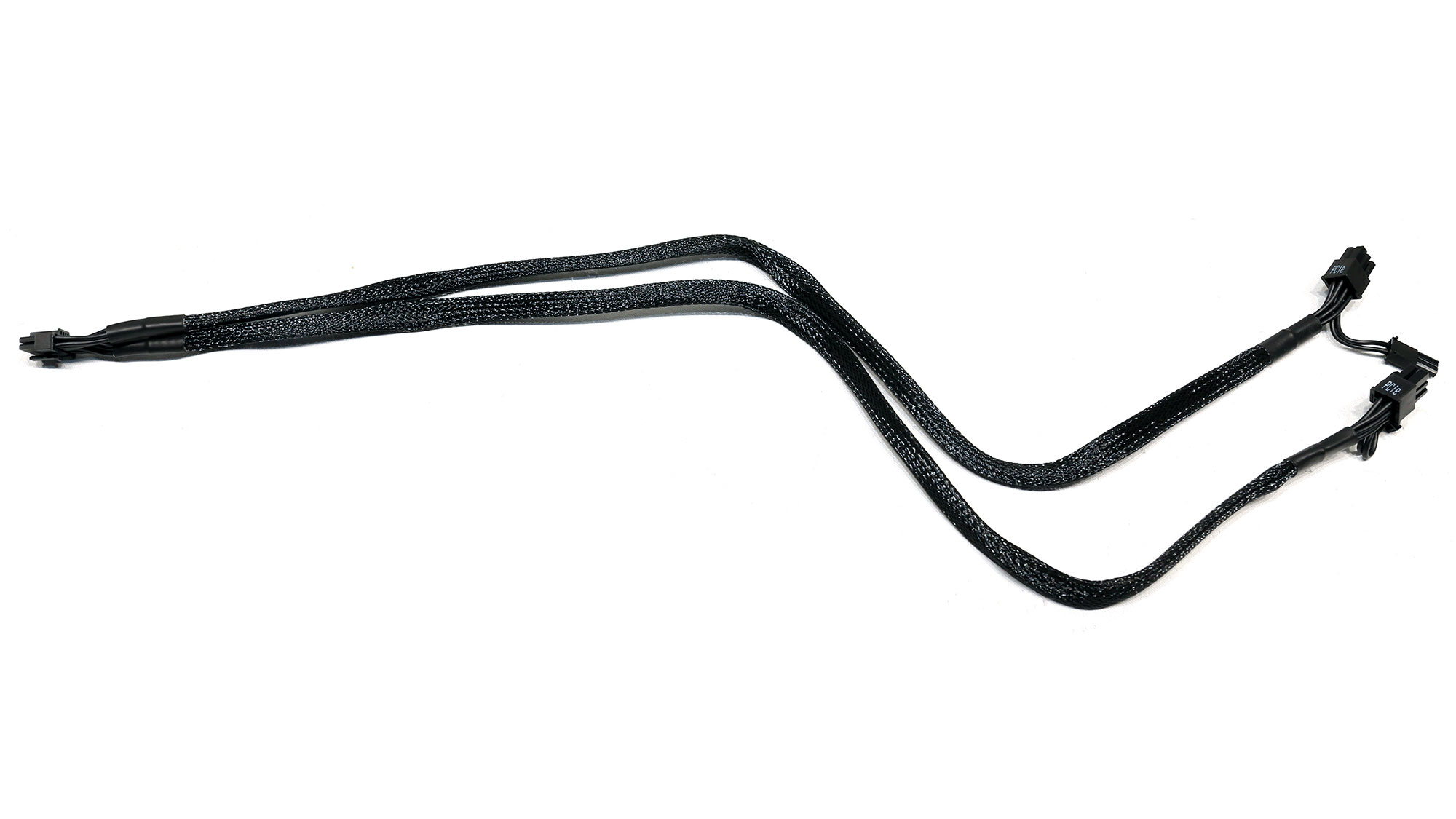
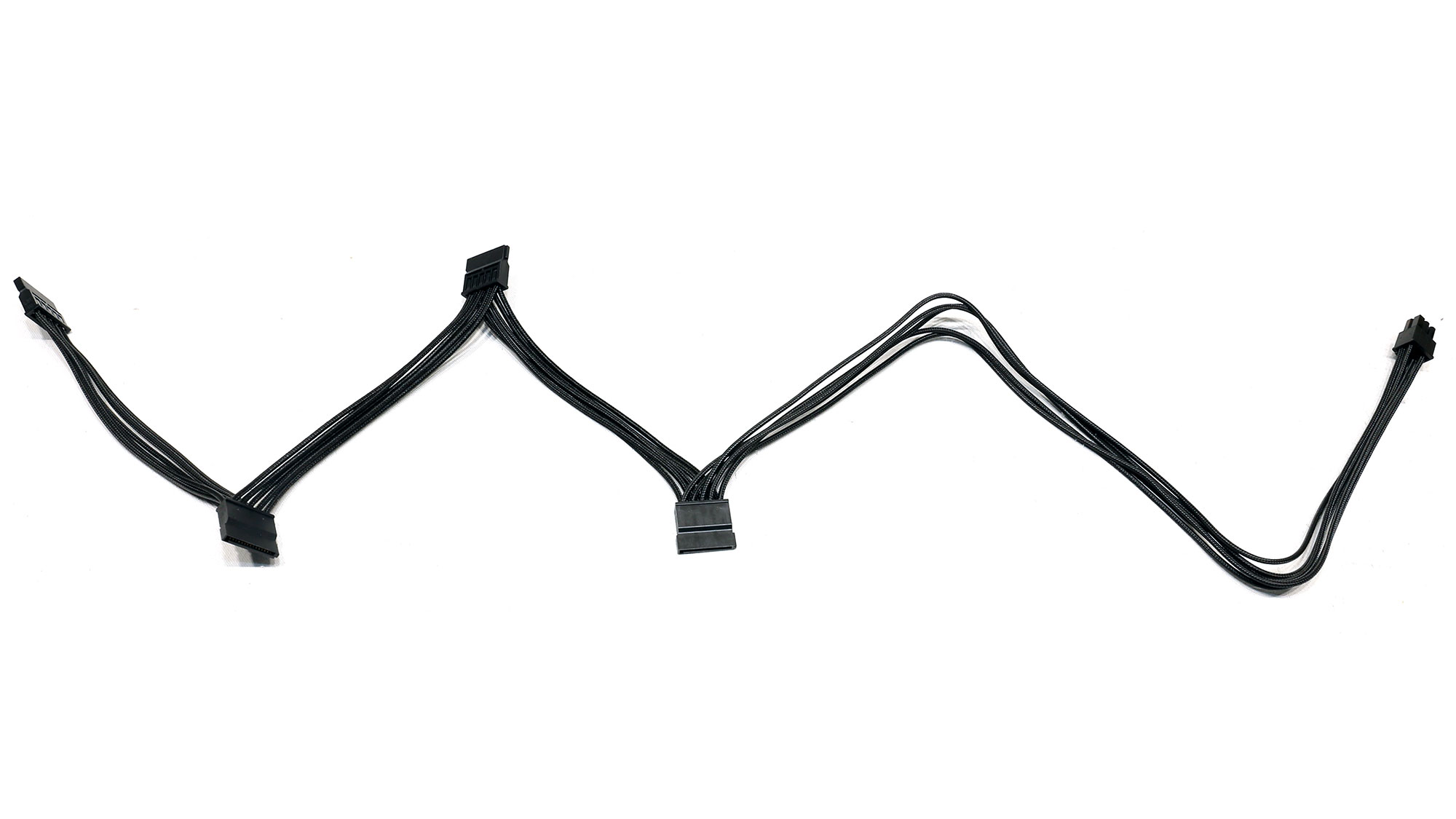
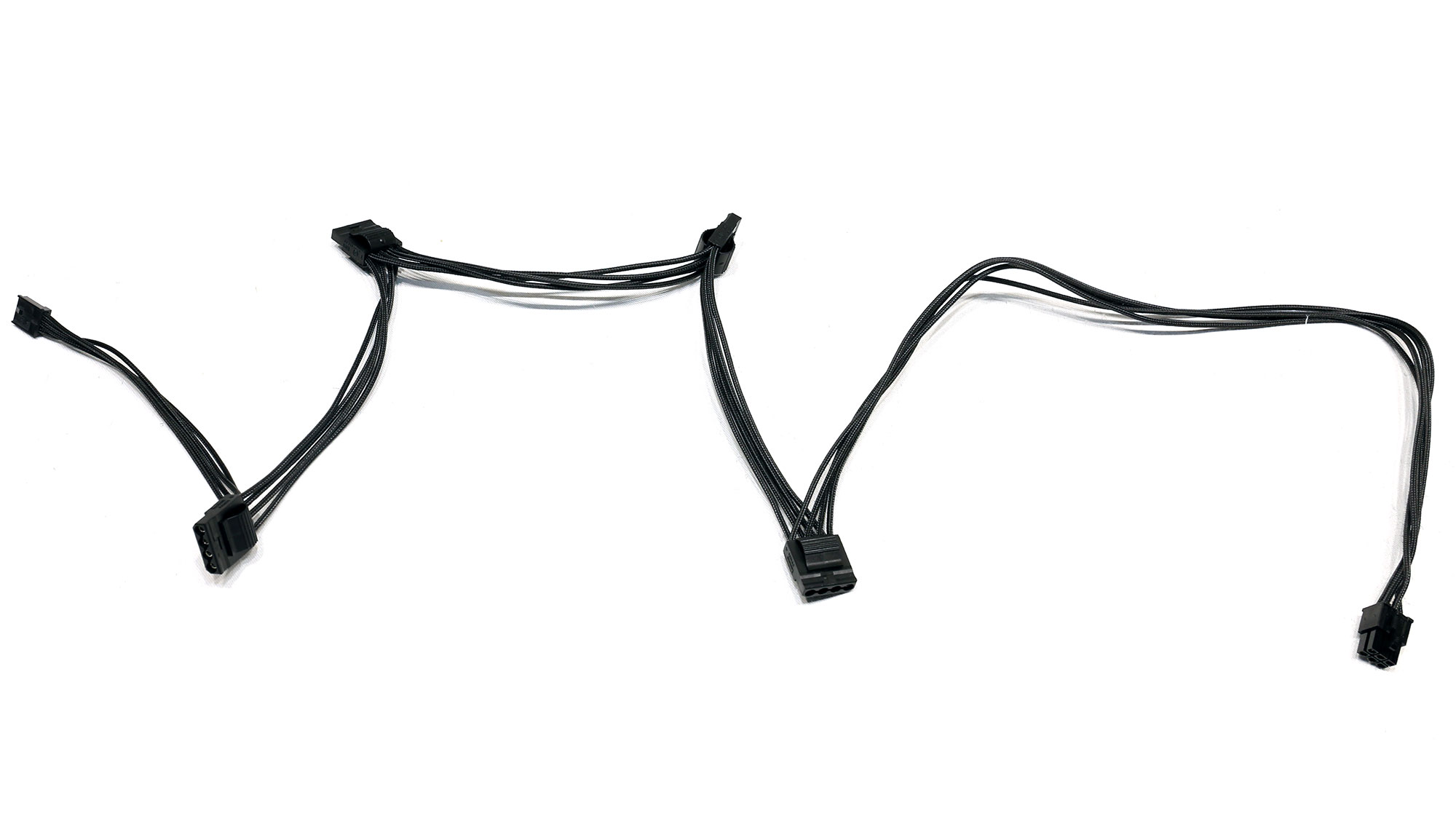
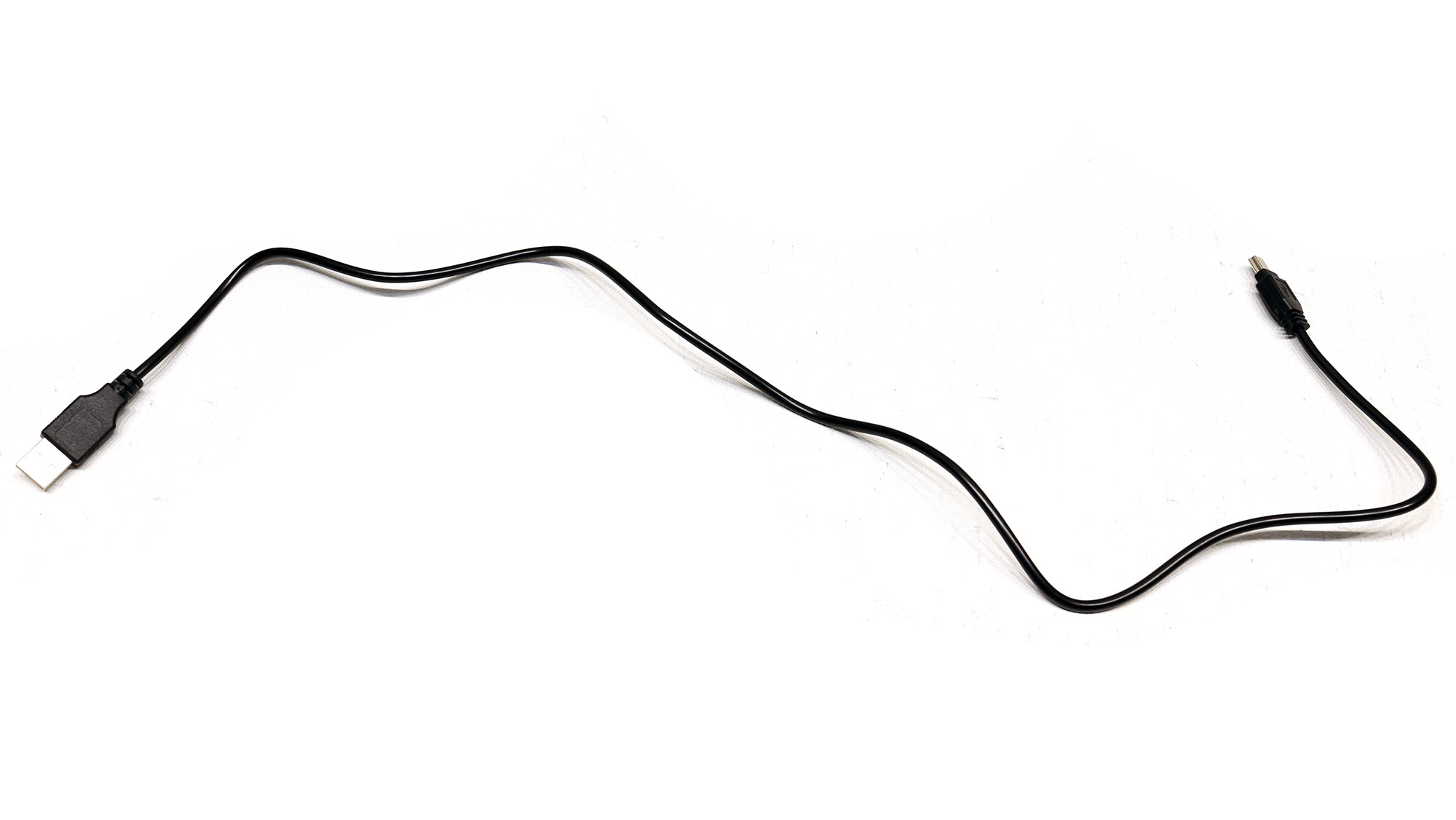
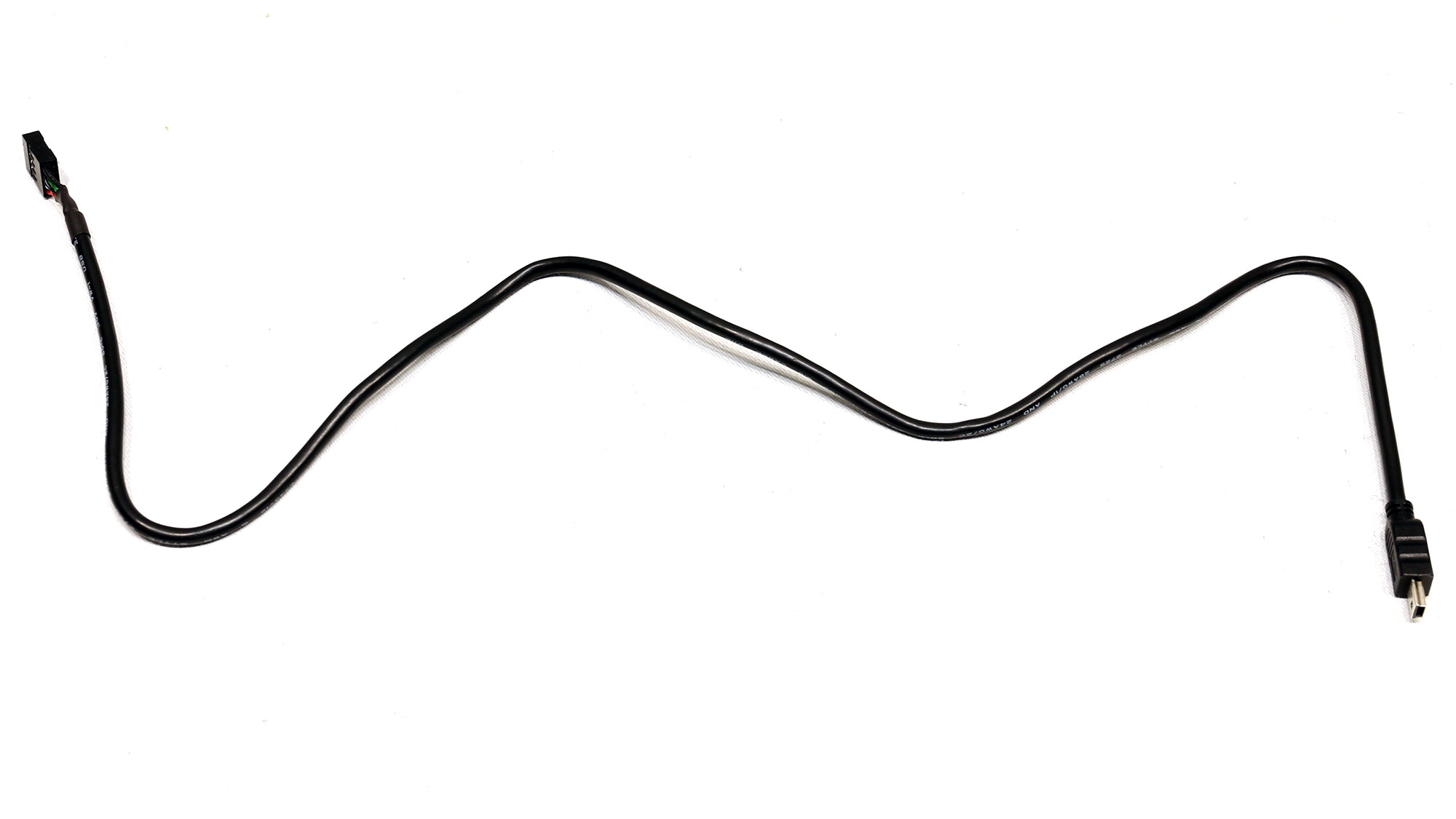
Component Analysis
We strongly encourage you to have a look at our PSUs 101 article, which provides valuable information about PSUs and their operation, allowing you to better understand the components we're about to discuss.
| General Data | - |
| Manufacturer (OEM) | CWT |
| Platform | CTT |
| PCB Type | Double Sided |
| Primary Side | - |
| Transient Filter | 6x Y caps, 2x X caps, 2x CM chokes, 1x MOV |
| Inrush Protection | NTC Thermistor & Relay |
| Bridge Rectifier(s) | 2x GBJ2506 (600V, 25A @ 100°C) |
| APFC MOSFETs |
2x Infineon IPA60R099P6 (600V, 24A @ 100°C, Rds(on): 0.099Ohm) & 1x SYNC Power SPN5003 (to reduce no load consumption) |
| APFC Boost Diode | 2x Infineon IDH08G65C6 (650V, 8A @ 145°C) |
| Bulk Cap(s) |
1x Nichicon (400V, 680uF, 2,000h @ 105°C, GL) & 1x Nichicon (400V, 560uF, 2,000h @ 105°C, GG) |
| Main Switchers | 4x Alpha & Omega AOTF29S50 (500V, 18A @ 100°C, Rds(on): 0.15Ohm) |
|
IC Drivers |
2x Novosense NSi6602 & |
| Digital APFC Controller | Texas Instruments UCD3138A |
| Digital Resonant Controller | Texas Instruments UCD3138A |
| Topology |
Primary side: Semi-Digital, Interleaved PFC, Full-Bridge & LLC converter Secondary side: Synchronous Rectification & DC-DC converters |
| Secondary Side | - |
| +12V MOSFETs | 6x Infineon BSC014N06NS (60V, 152A @ 100°C, Rds(on): 1.45mOhm) |
| 5V & 3.3V | DC-DC Converters: 6x FETs PWM Controller(s): no info |
| Filtering Capacitors |
Electrolytic: 5x Nippon Chemi-Con (105°C, W), 1x Nichicon (2-5,000h @ 105°C, HD), 4x Nippon Chemi-Con (4-10,000h @ 105°C, KY), 1x Nippon Chemi-Con (2-5,000h @ 105°C, KZE), 3x Rubycon (4-10,000h @ 105°C, YXJ), 3x Rubycon (4-10,000h @ 105°C, YXF) |
| Supervisor IC | Weltrend WT7502R (OVP, UVP, SCP, PG) |
| MCU & Fan Controller | Microchip PIC32MM0064GPM036 |
| Fan Model | MSI (Powerlogic) PLA12025S12H-4 (120mm, 12V, 0.36A, Hydro-Dynamic Bearing Fan) |
| 5VSB Circuit | - |
| Rectifier | 1x PS1045L SBR (45V, 10A) |
| Standby PWM Controller | On Bright OB2365T |
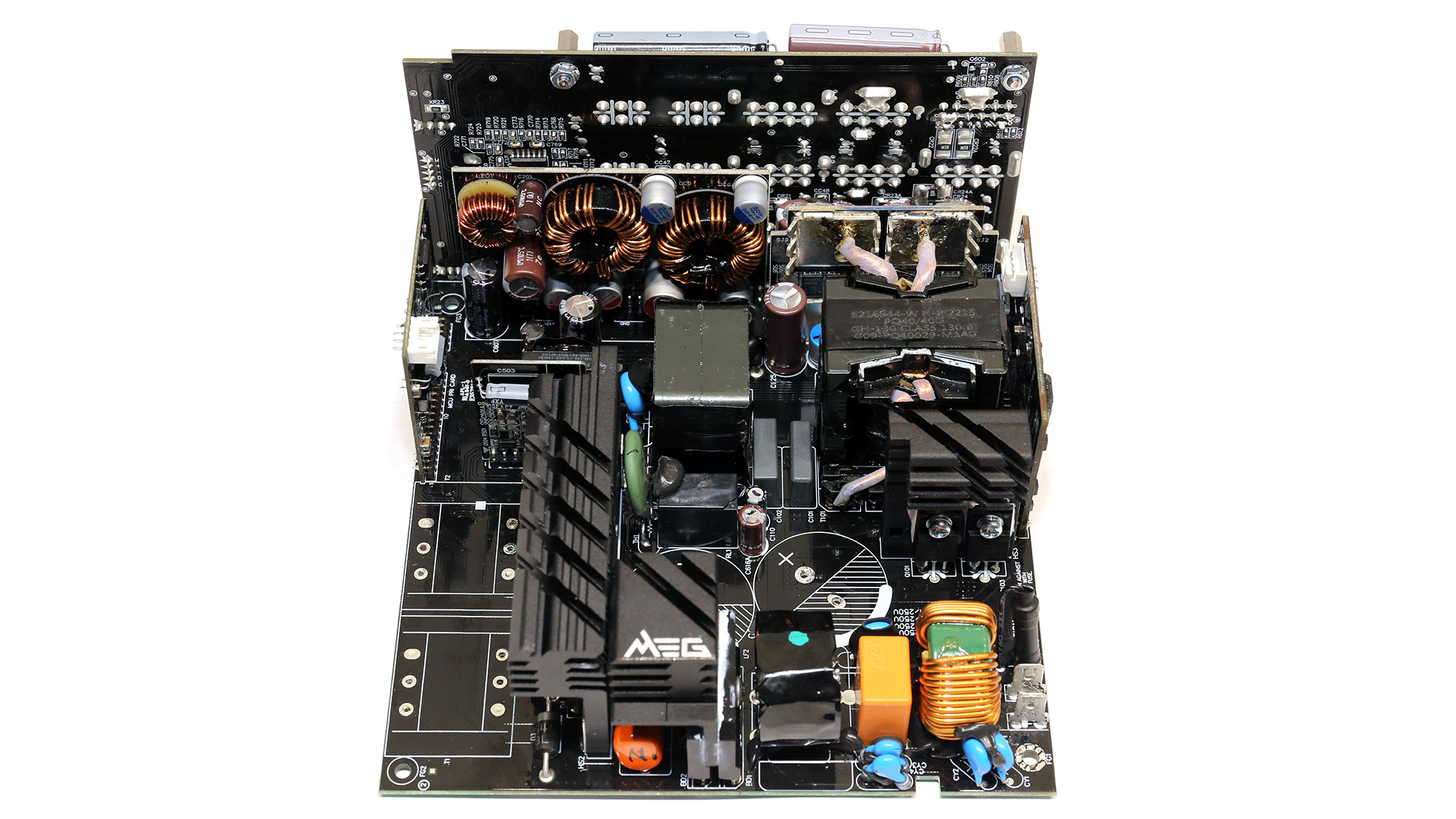



The platform is made by CWT and uses a semi-digital design with the code name CTT. This is a modern design where digital controllers handle the primary side and a part of the secondary side. Thanks to the digital controllers, the PSU can "talk" to the system so users, besides monitoring its vital functions, can also make changes to the fan speed control and toggle on/off the multi-rail mode for the 12V rail. CWT uses high-end parts everywhere, and our only objection is the small diameter fan, which is of extremely high quality, but the chassis could accommodate a 140 mm fan.
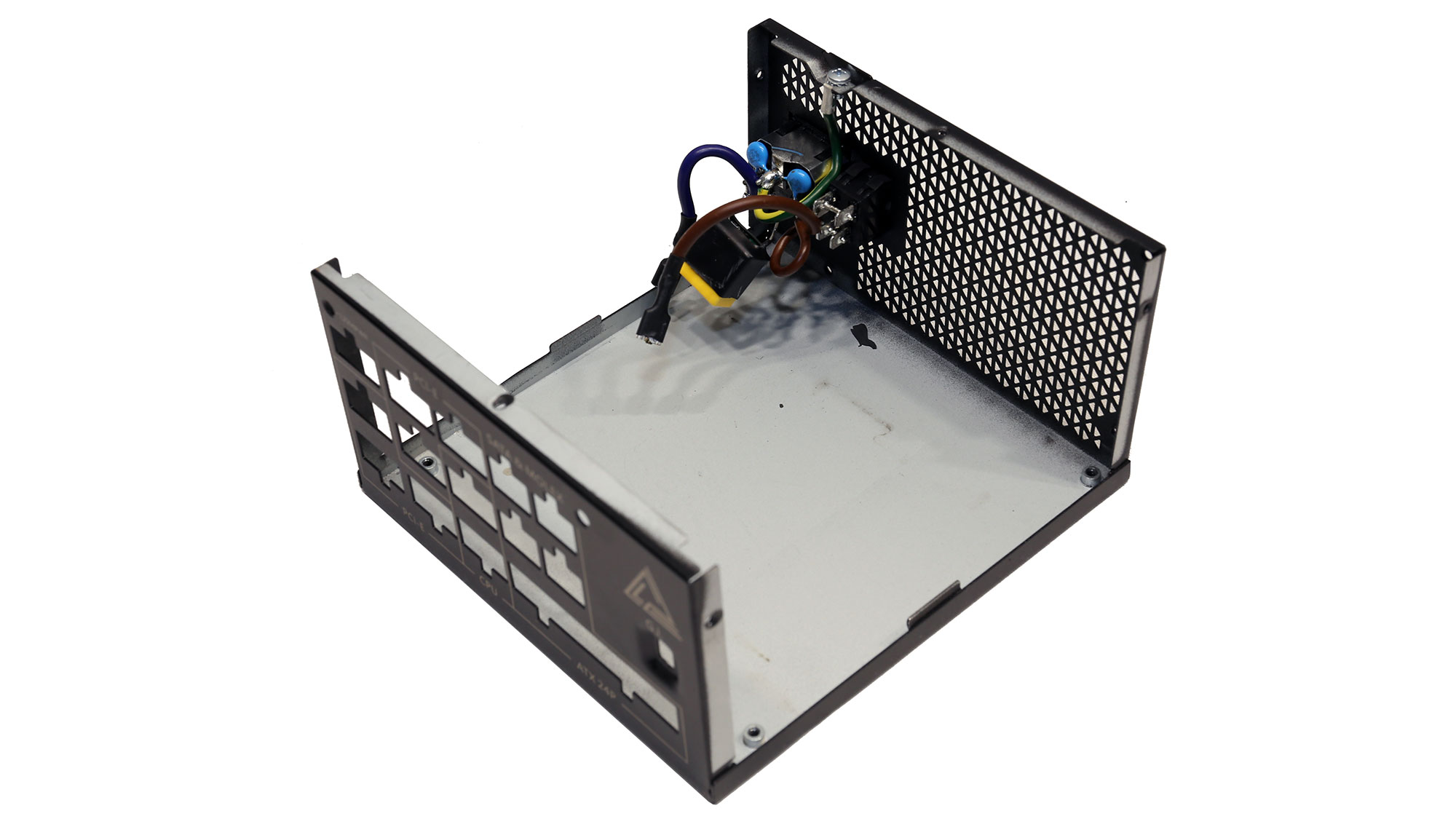



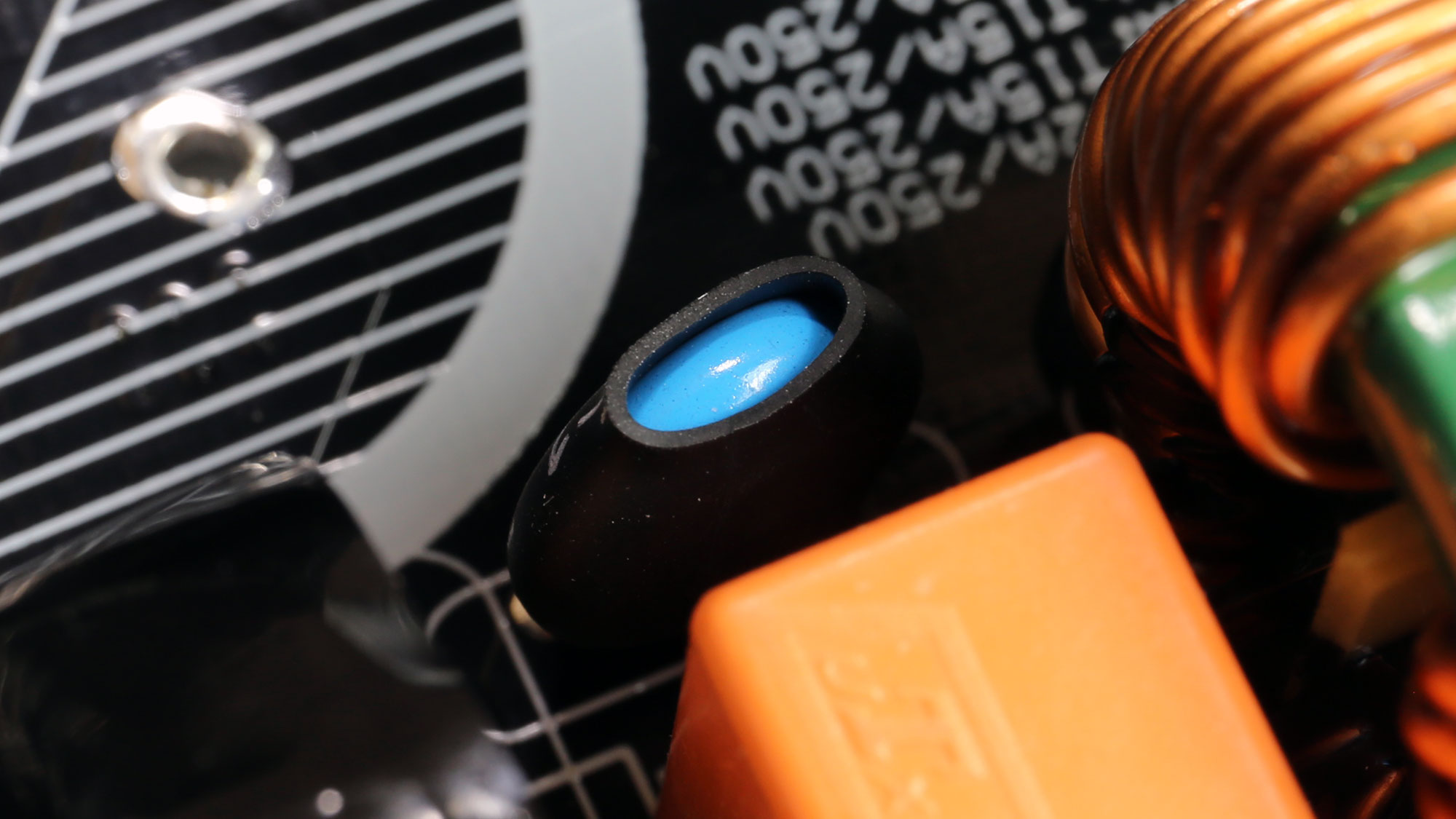
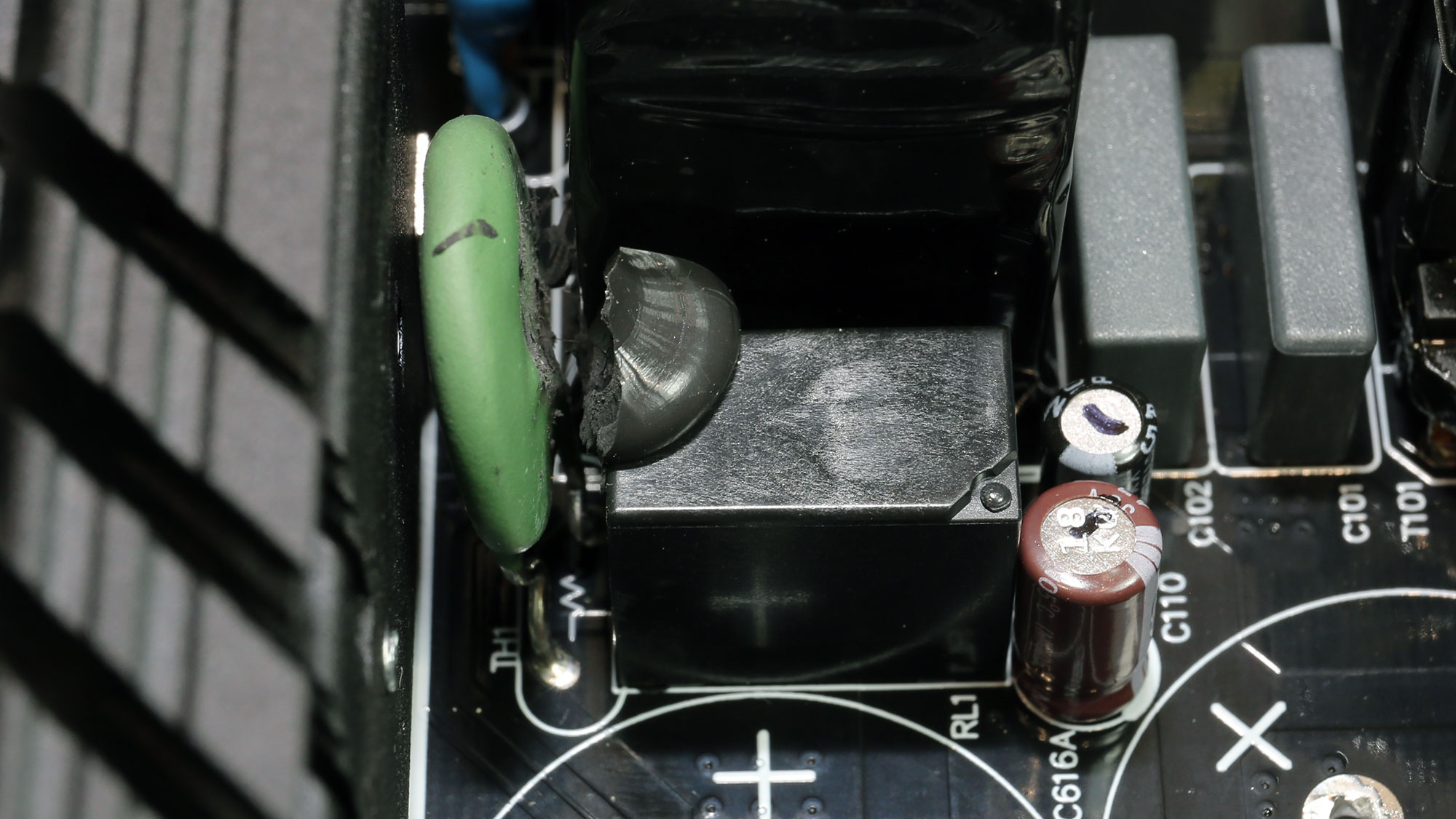
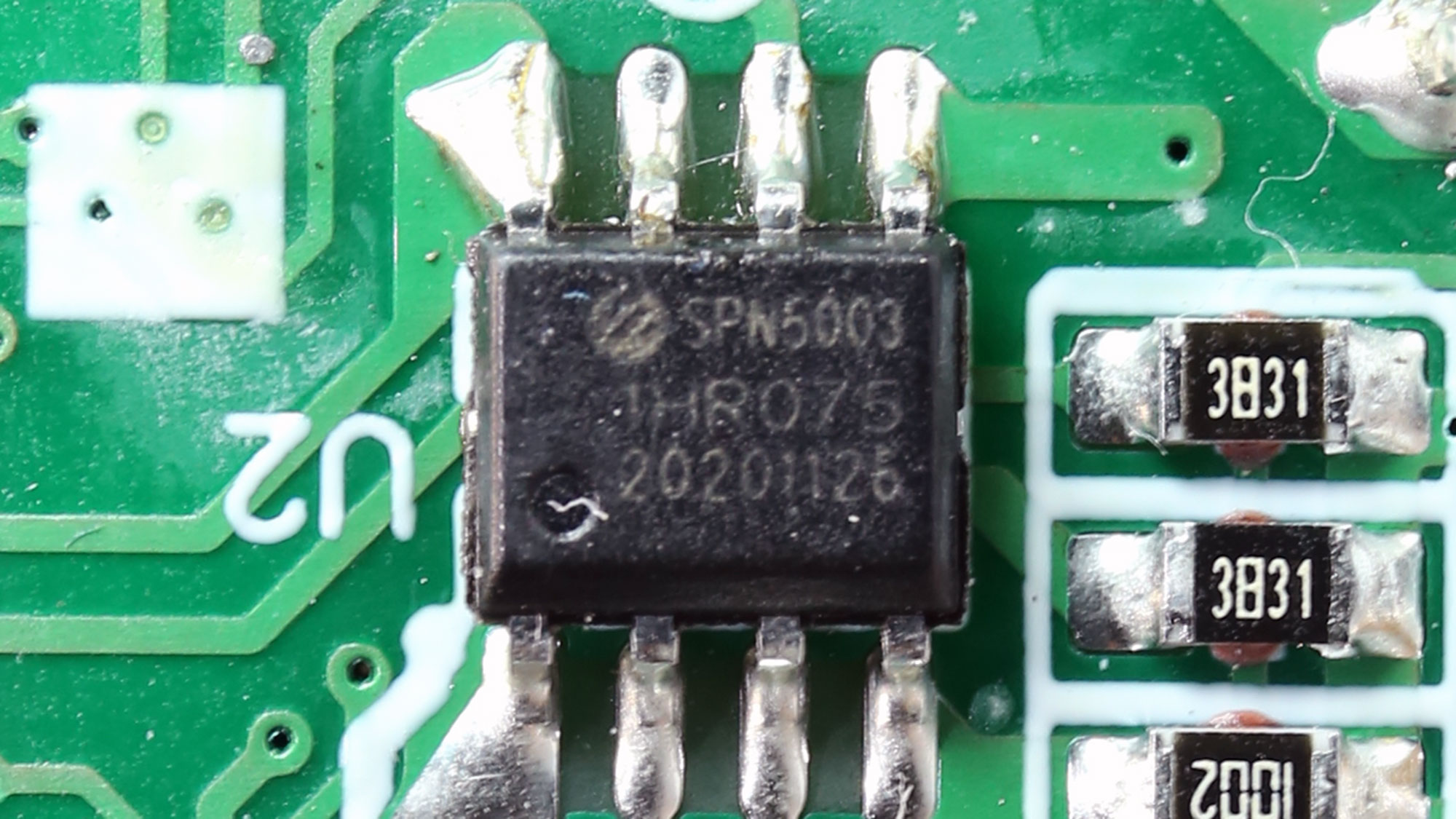
The transient/EMI filter has all necessary parts, including an MOV for protection against voltage surges. Moreover, there is an NTC thermistor and bypass relay combo for suppressing high inrush currents.
Get Tom's Hardware's best news and in-depth reviews, straight to your inbox.
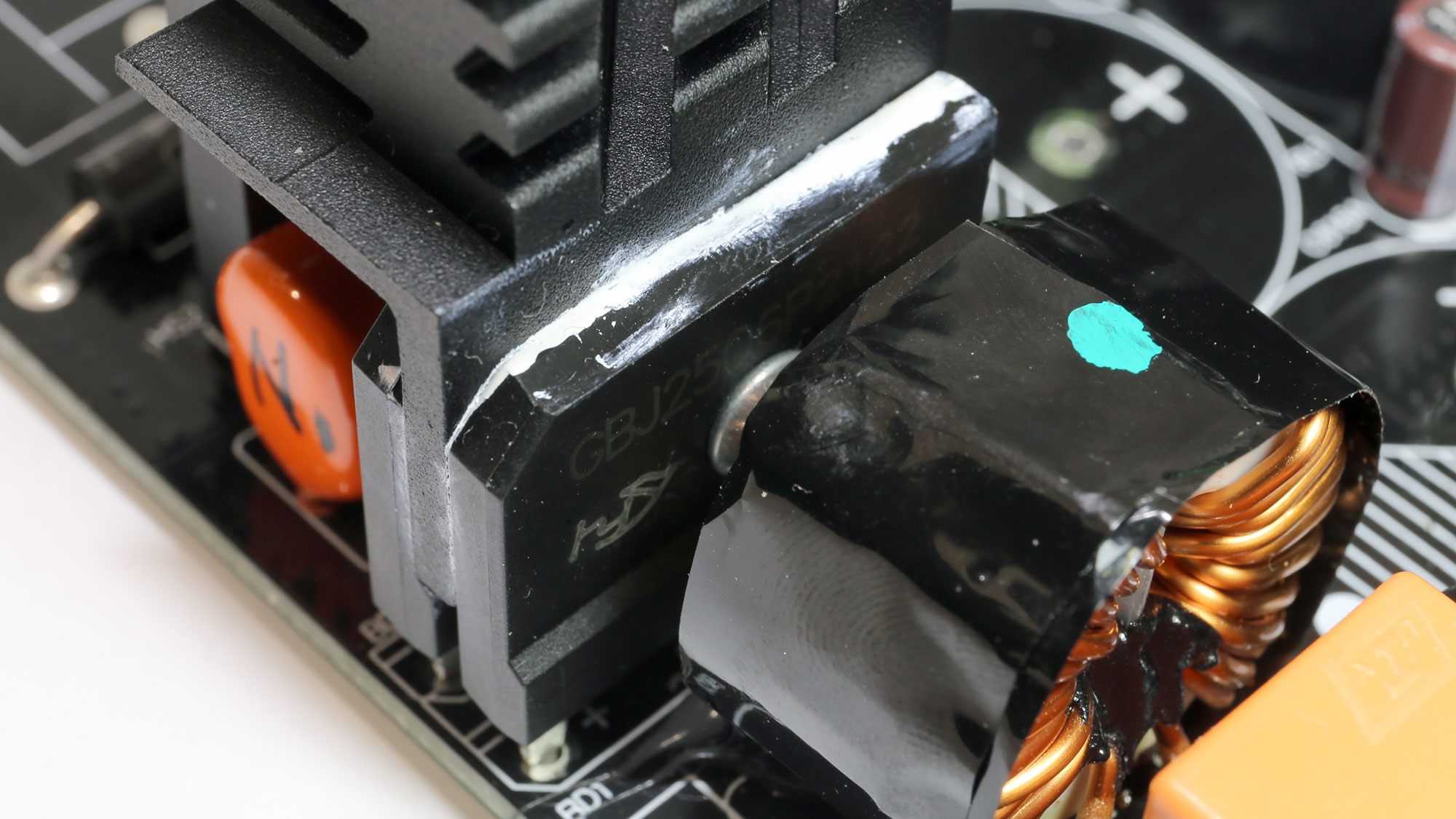

The pair of bridge rectifiers can handle up to 50A.



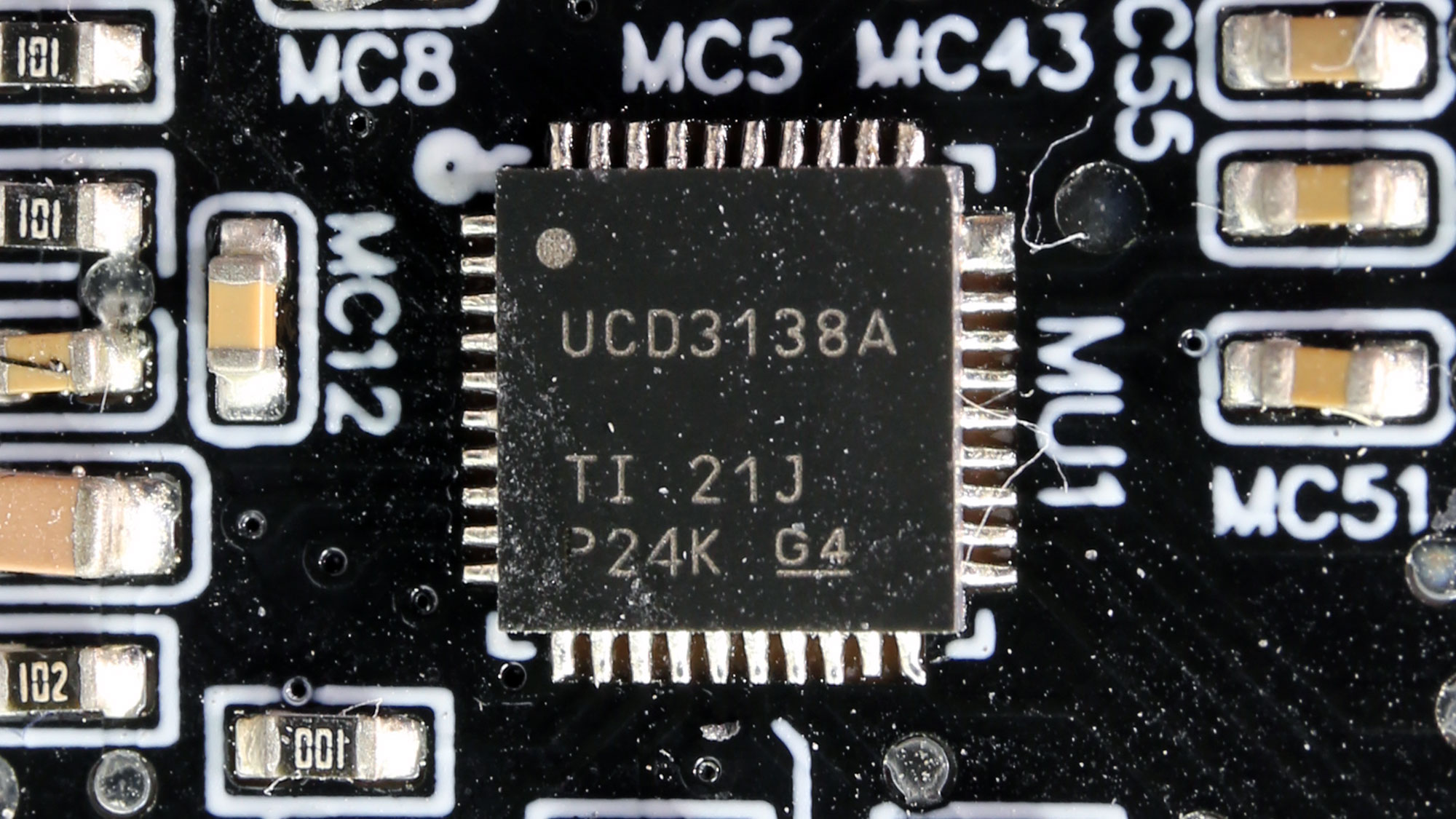
The APFC circuit has two Infineon FETs and two boost diodes because it uses an interleaved design where two converters work in parallel. The bulk caps are by Nichicon, and their combined capacity is high, allowing for more than 17ms hold-up time easily.
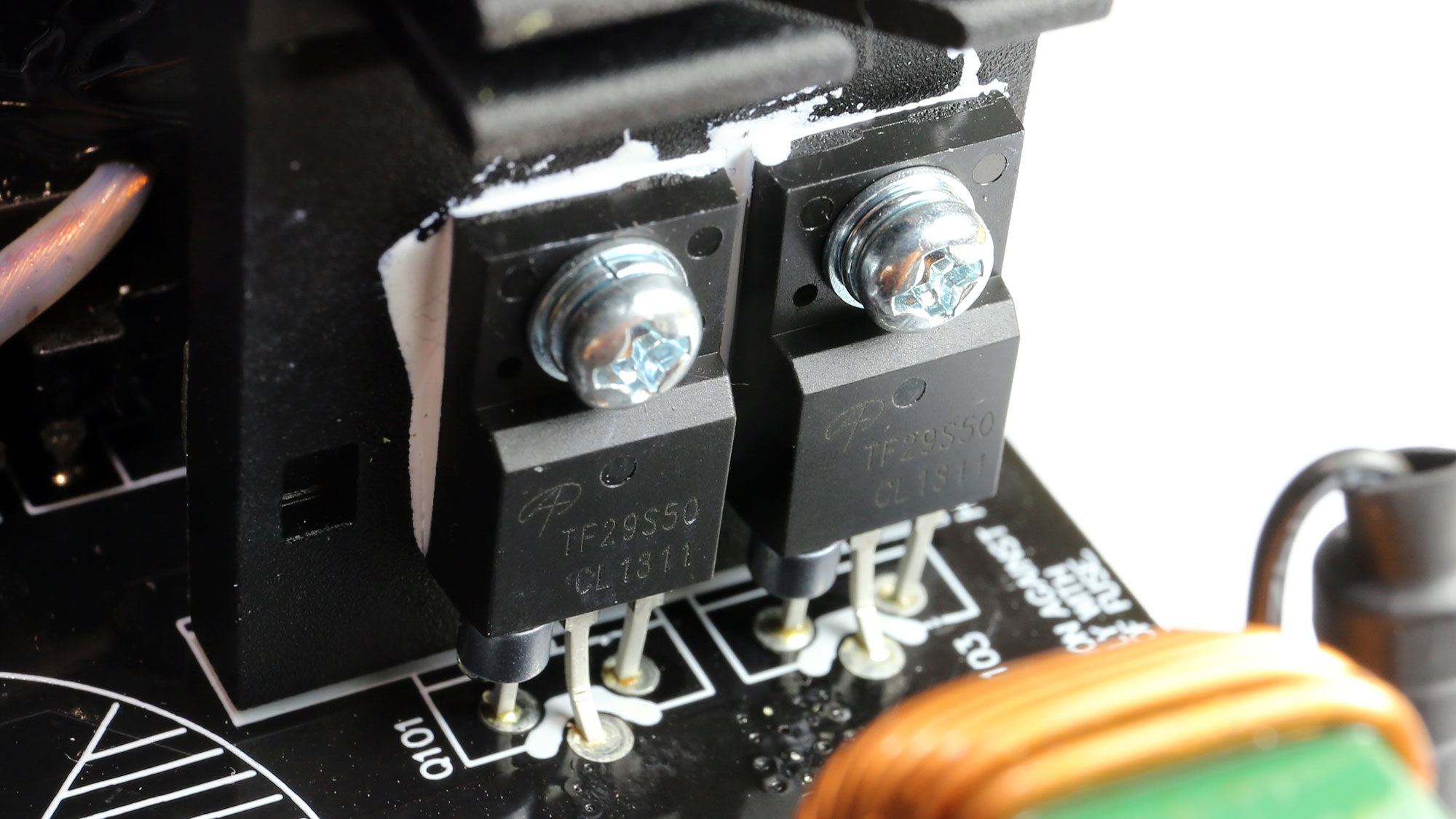
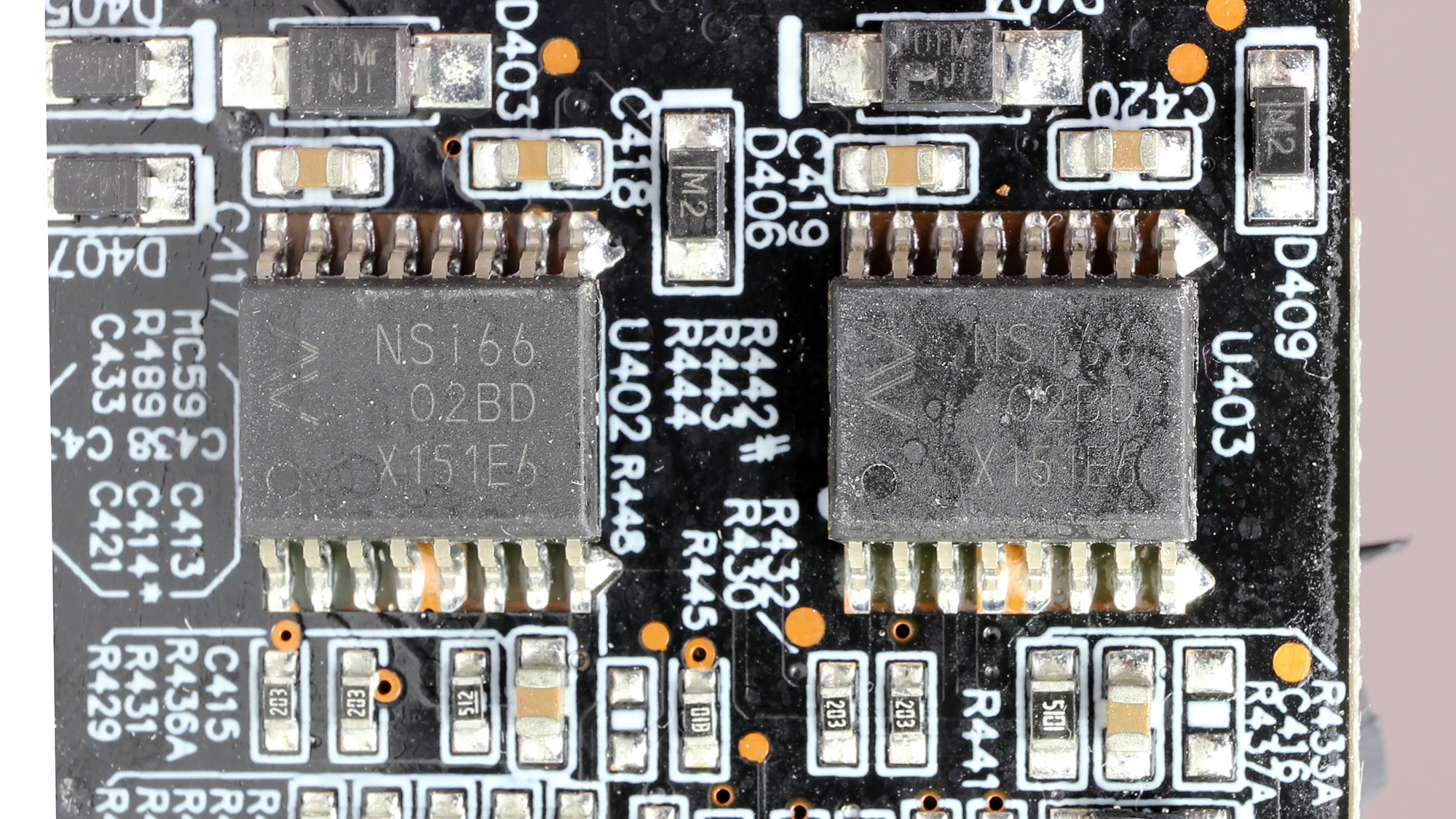

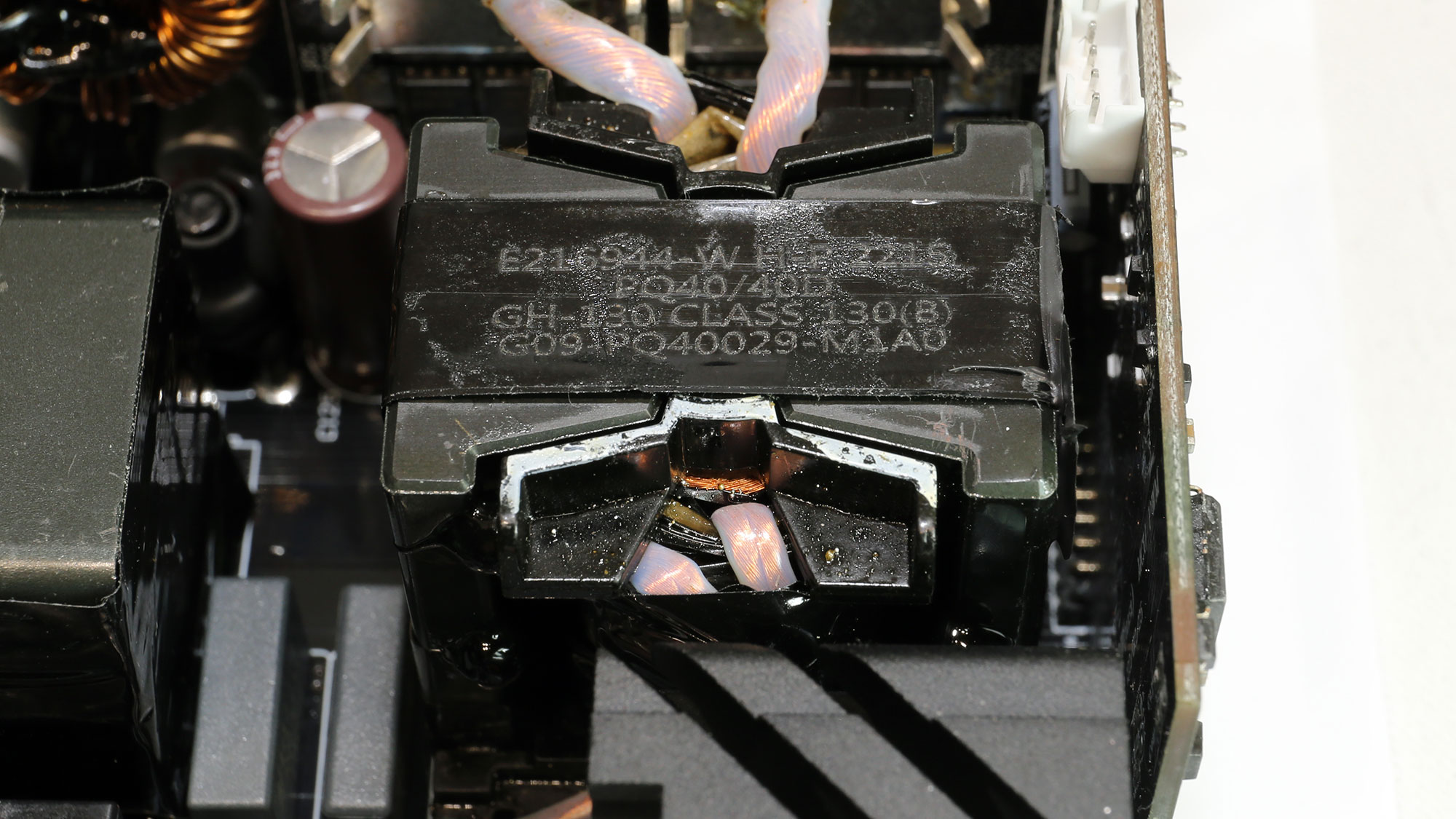


The four main FETs are installed into a full-bridge topology. An LLC resonant converter is also used for lowering energy losses.
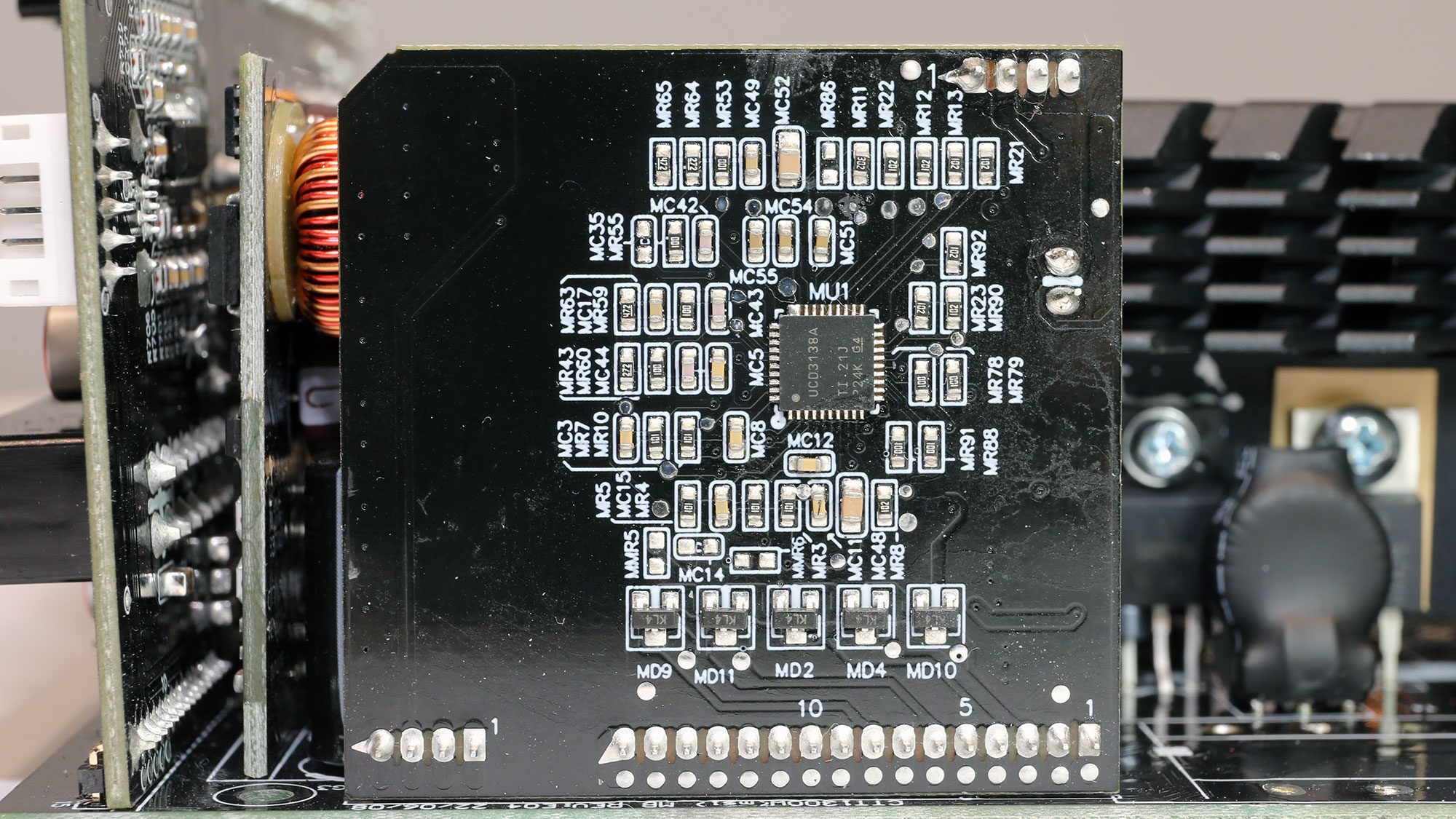
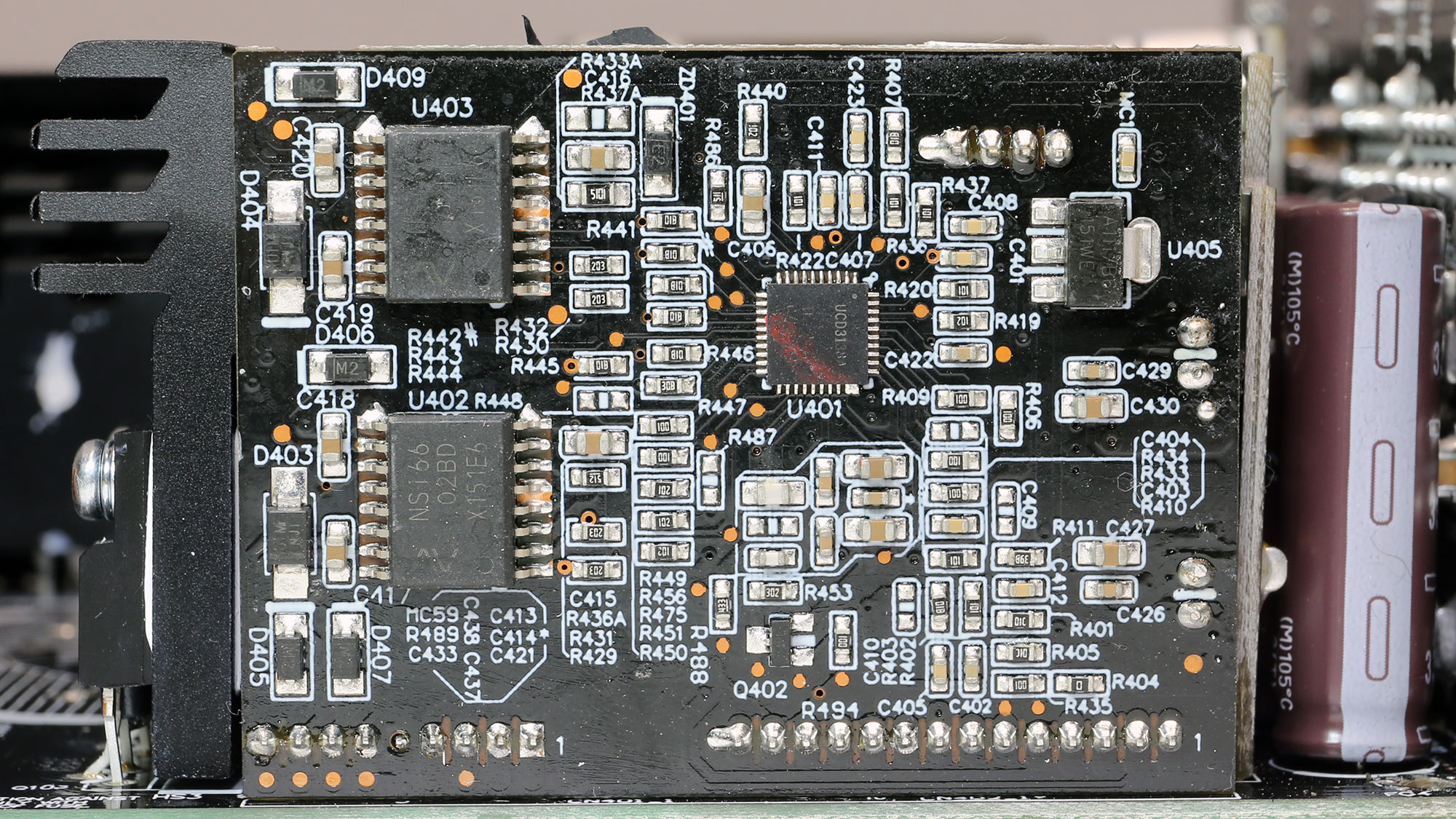
This is the board holding one of the Texas Instruments digital controllers.

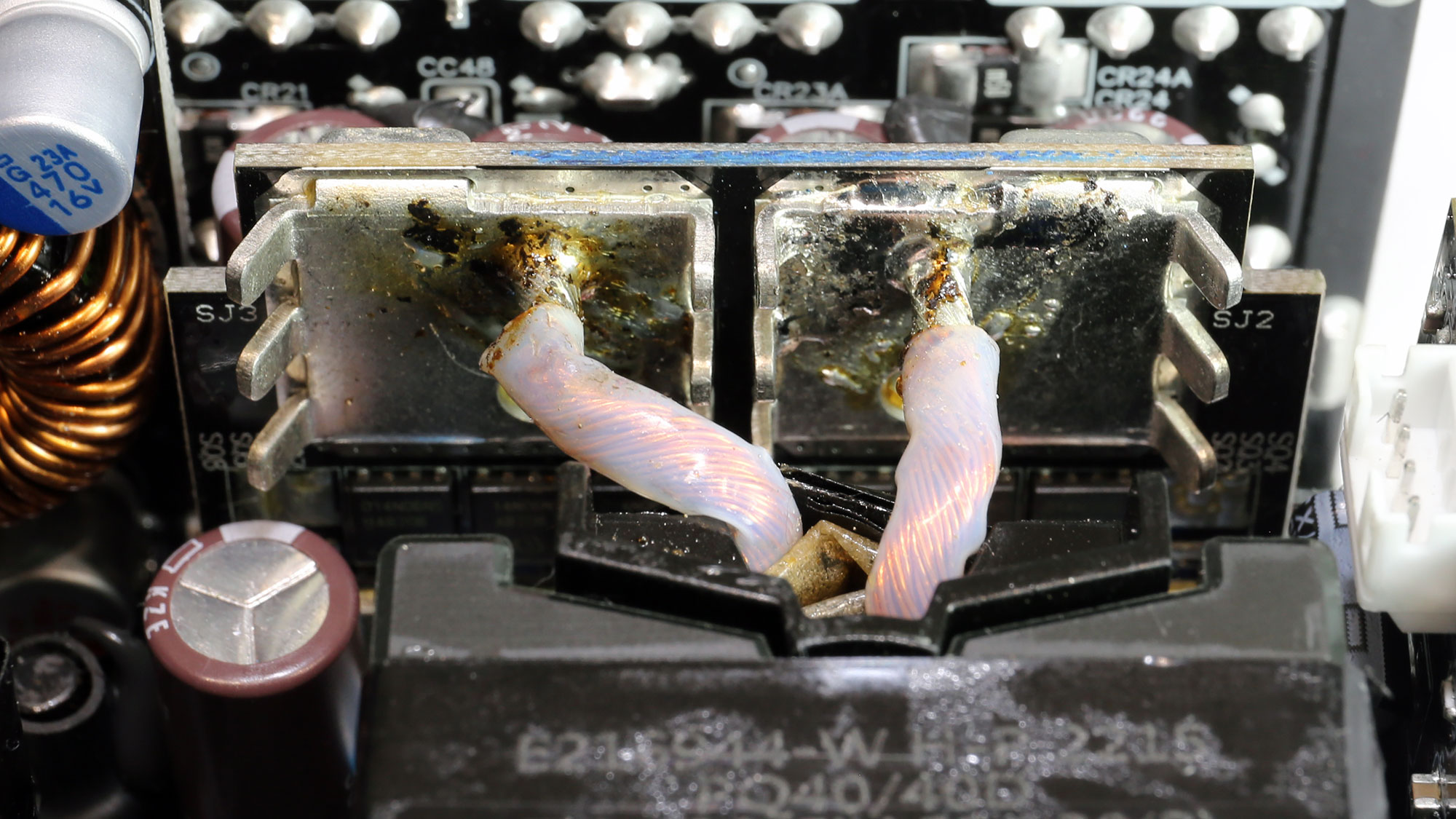
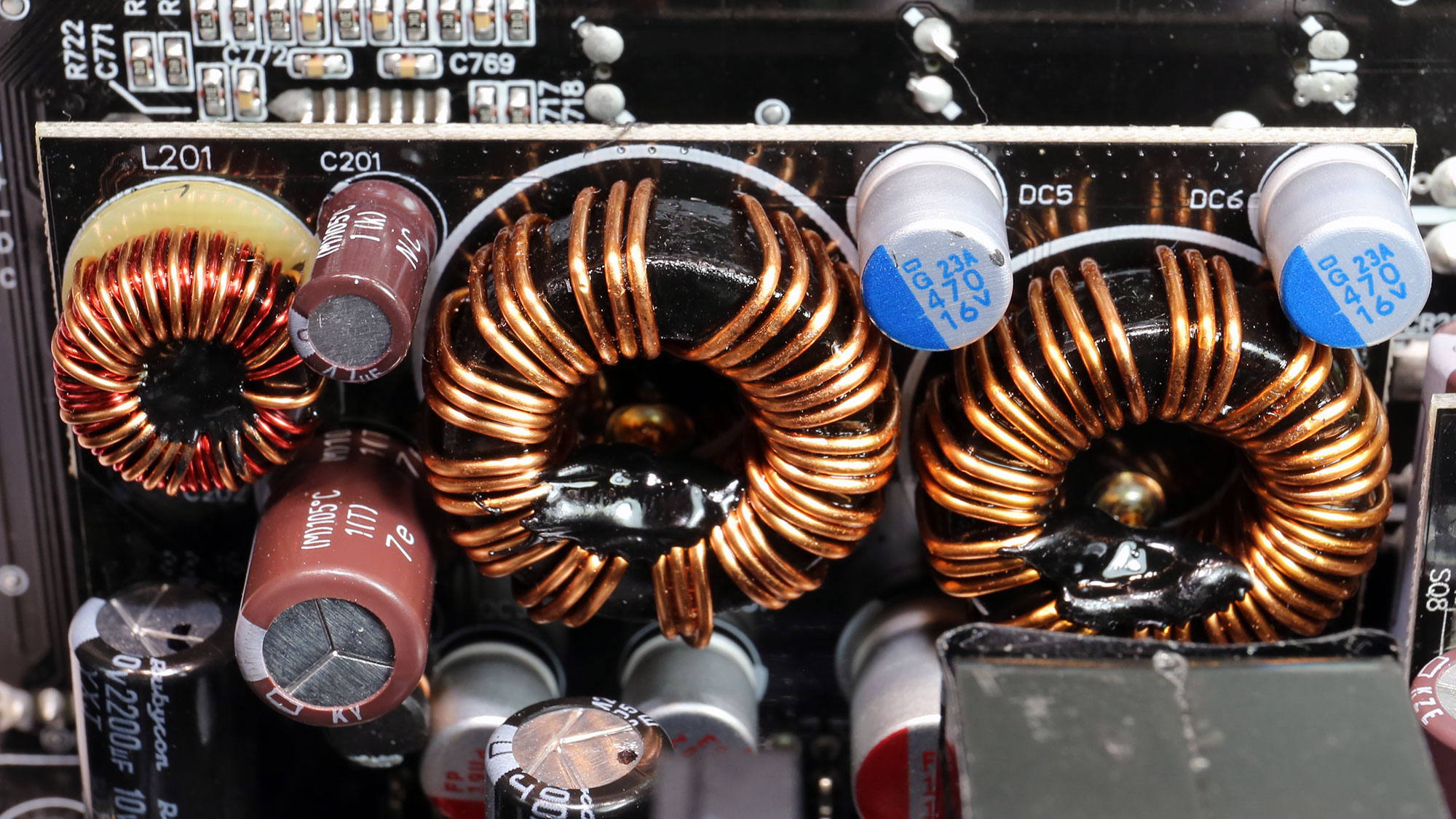
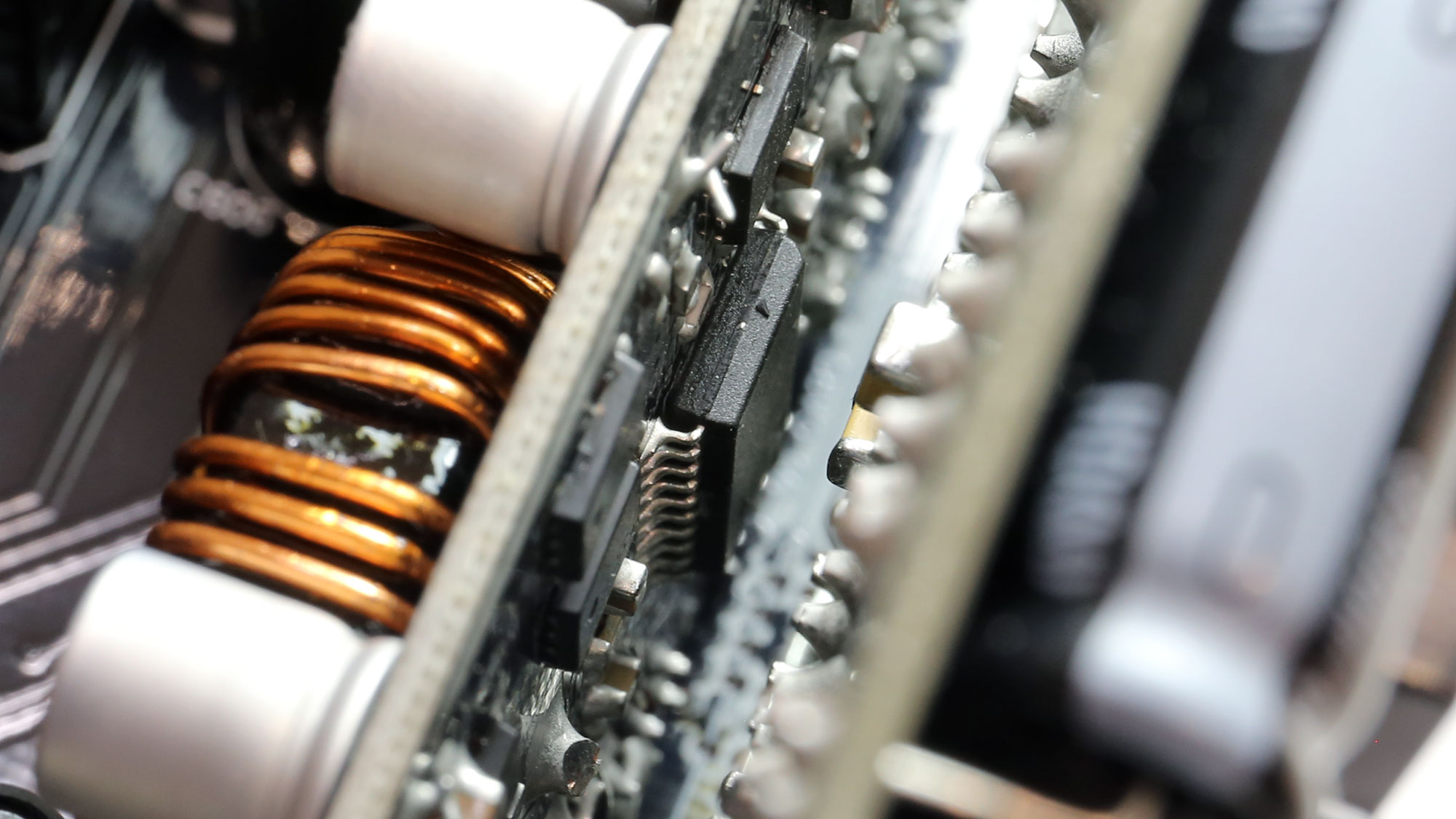
Six Infineon FETs regulate the 12V rail. Two VRMs generate the minor rails.
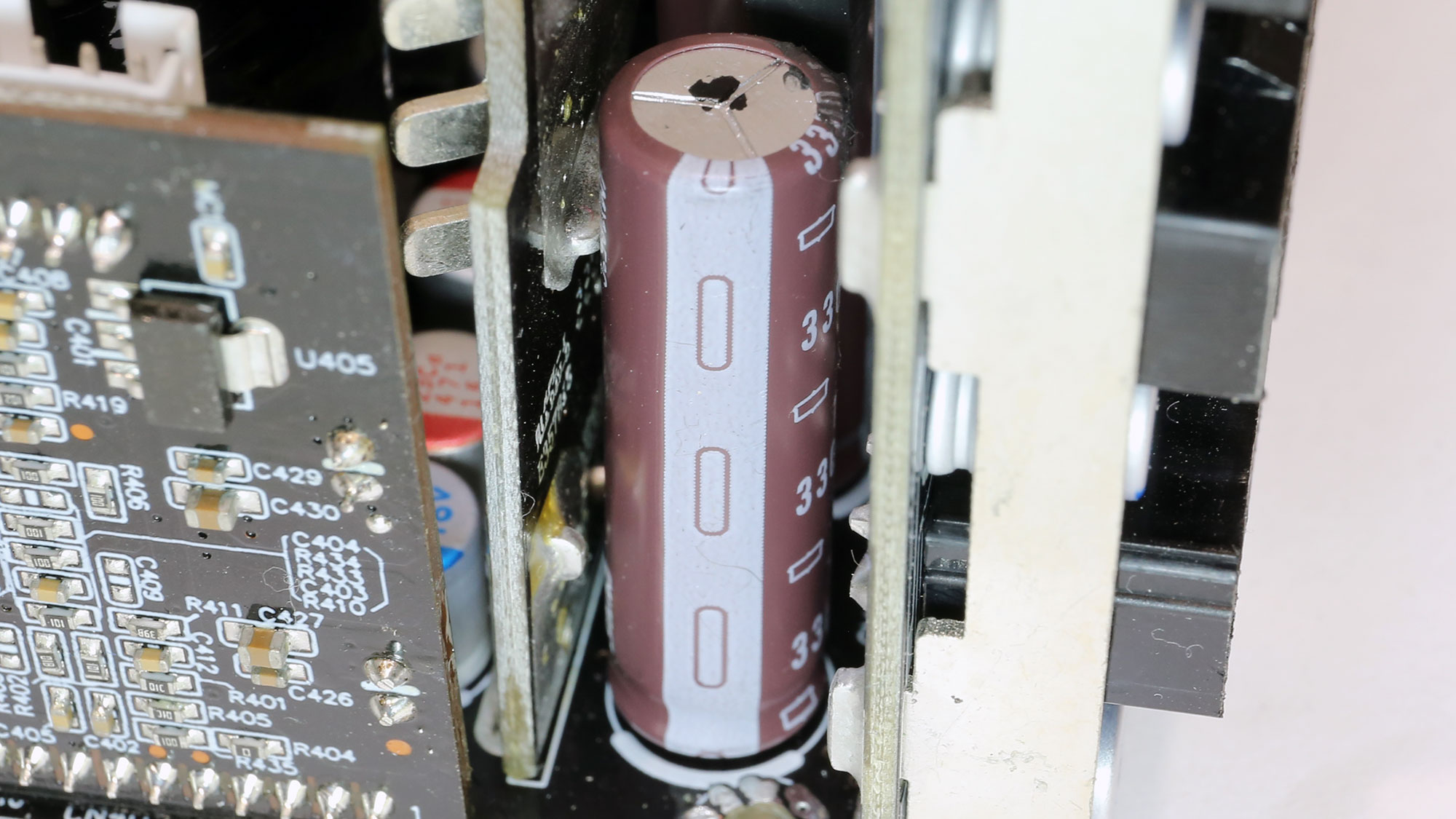


All filtering caps are of high quality, electrolytic and polymer ones.
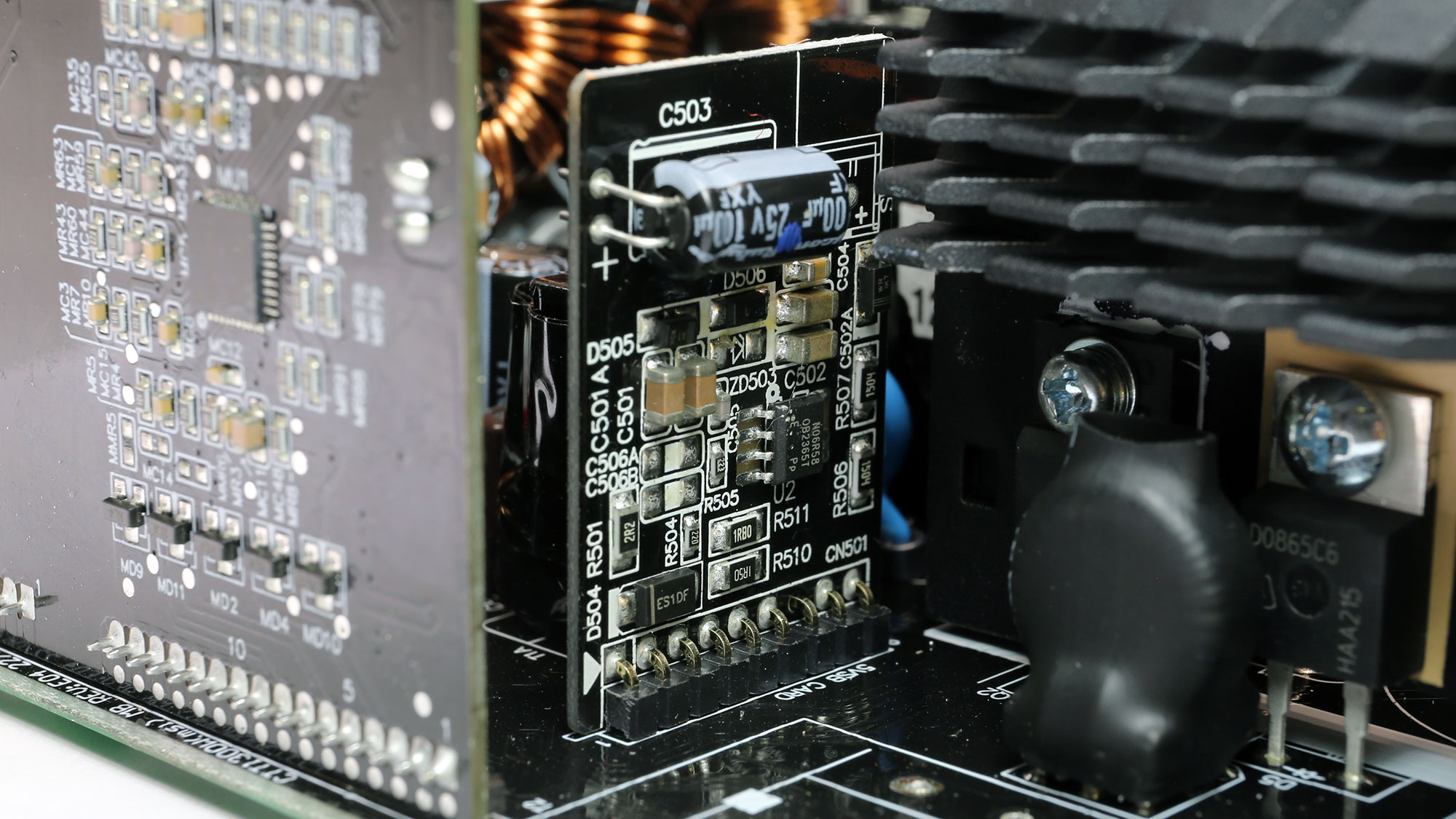
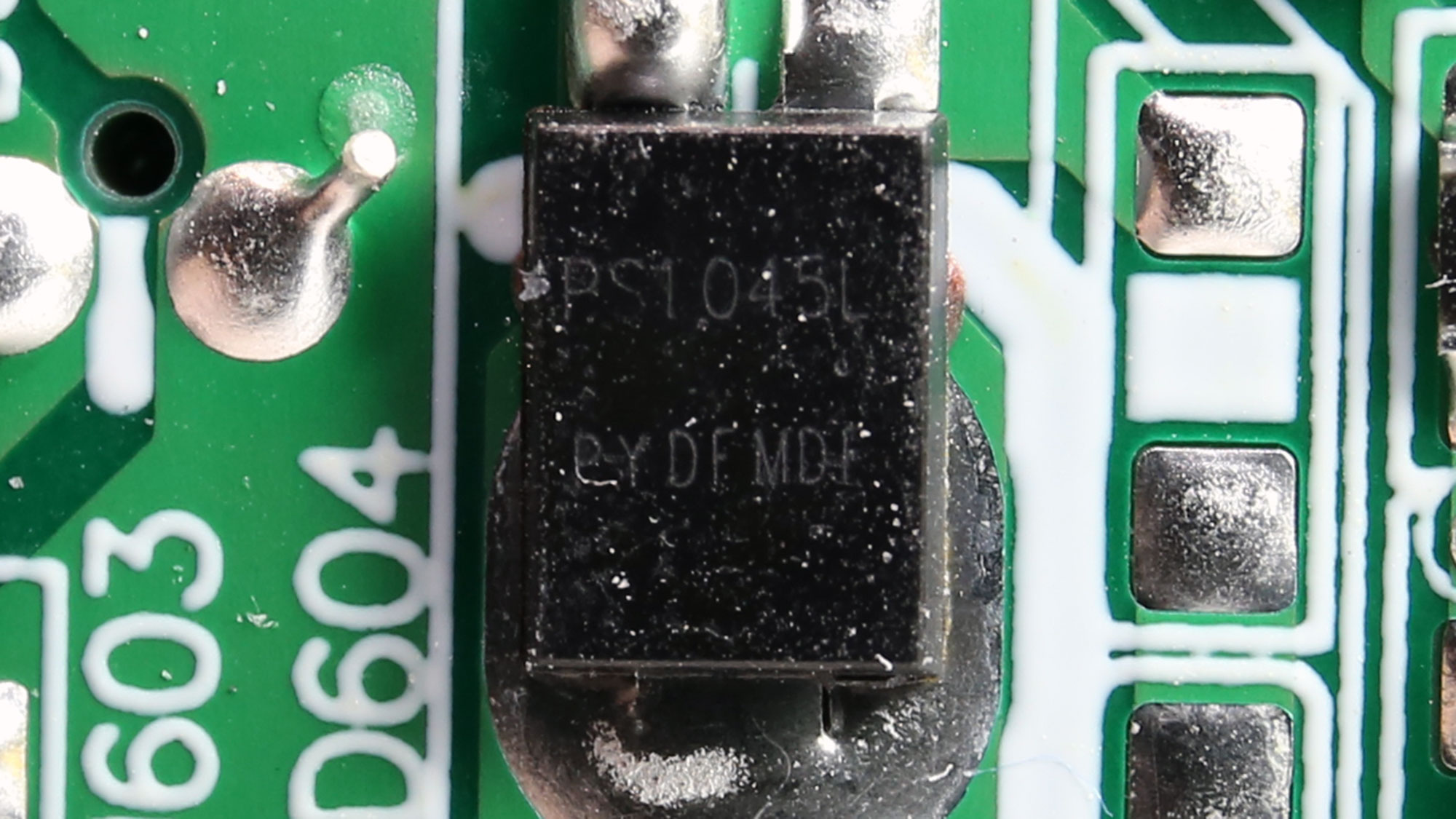

The standby PWM controller is an On Bright OB2365T.
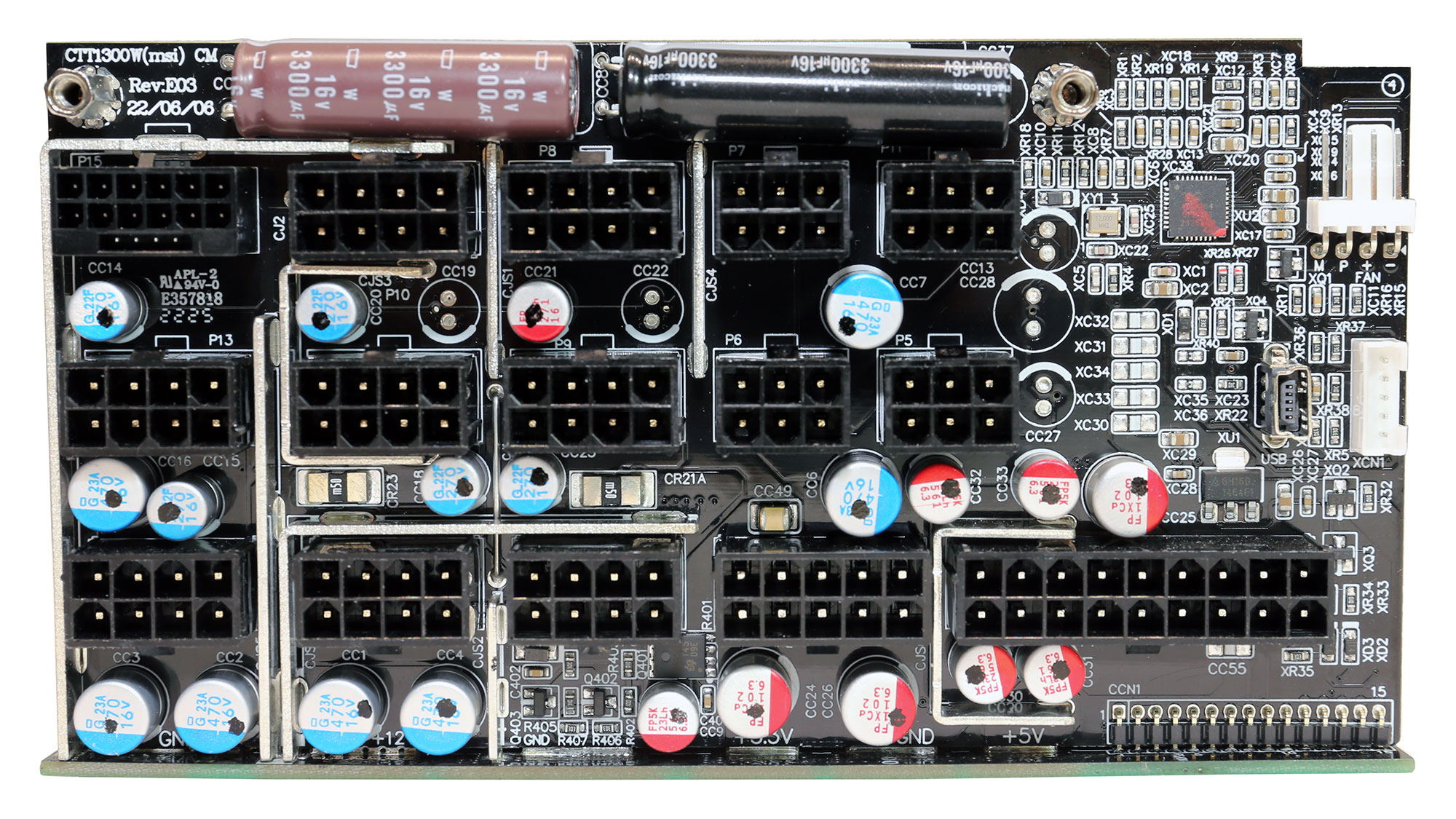
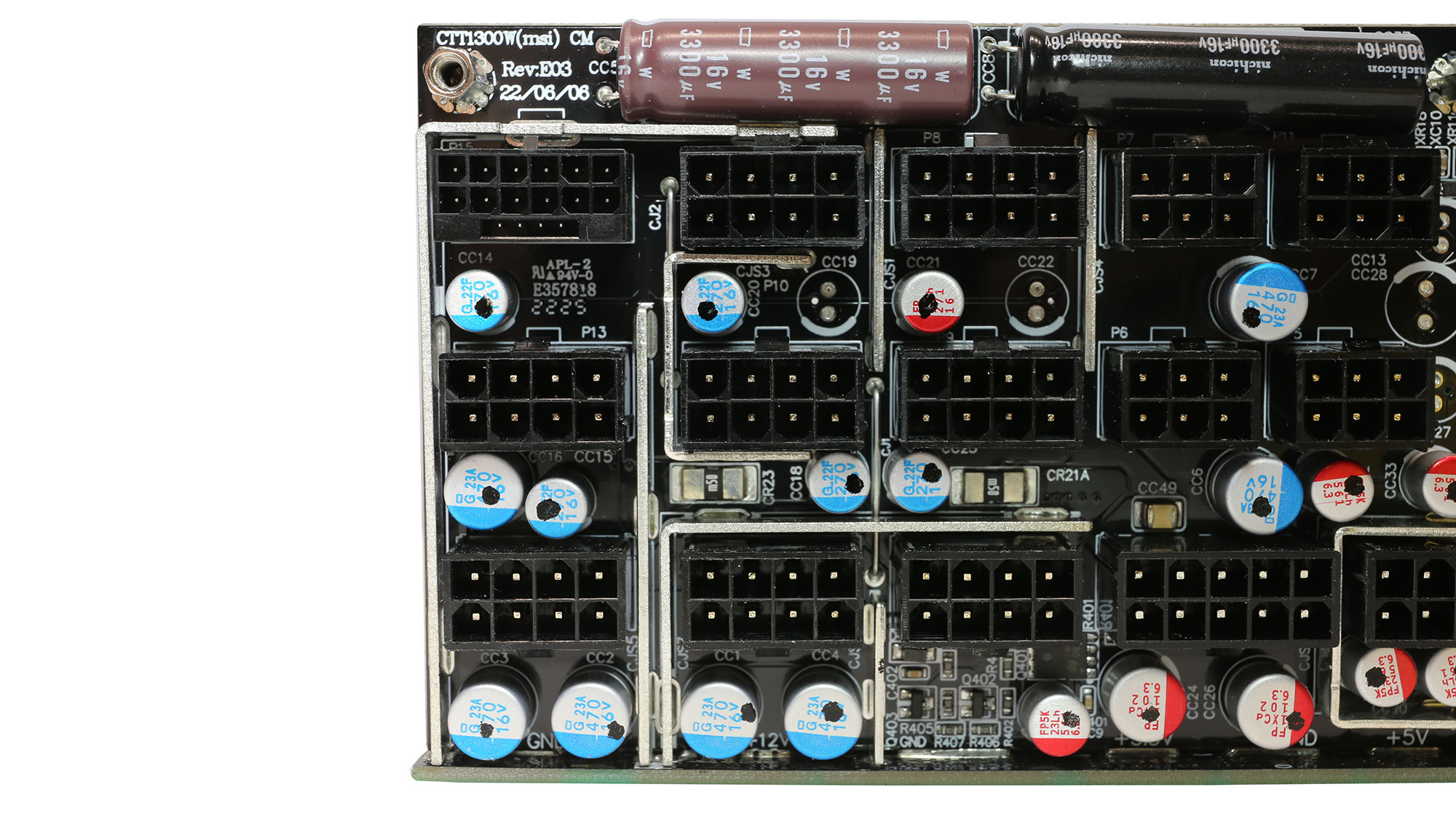
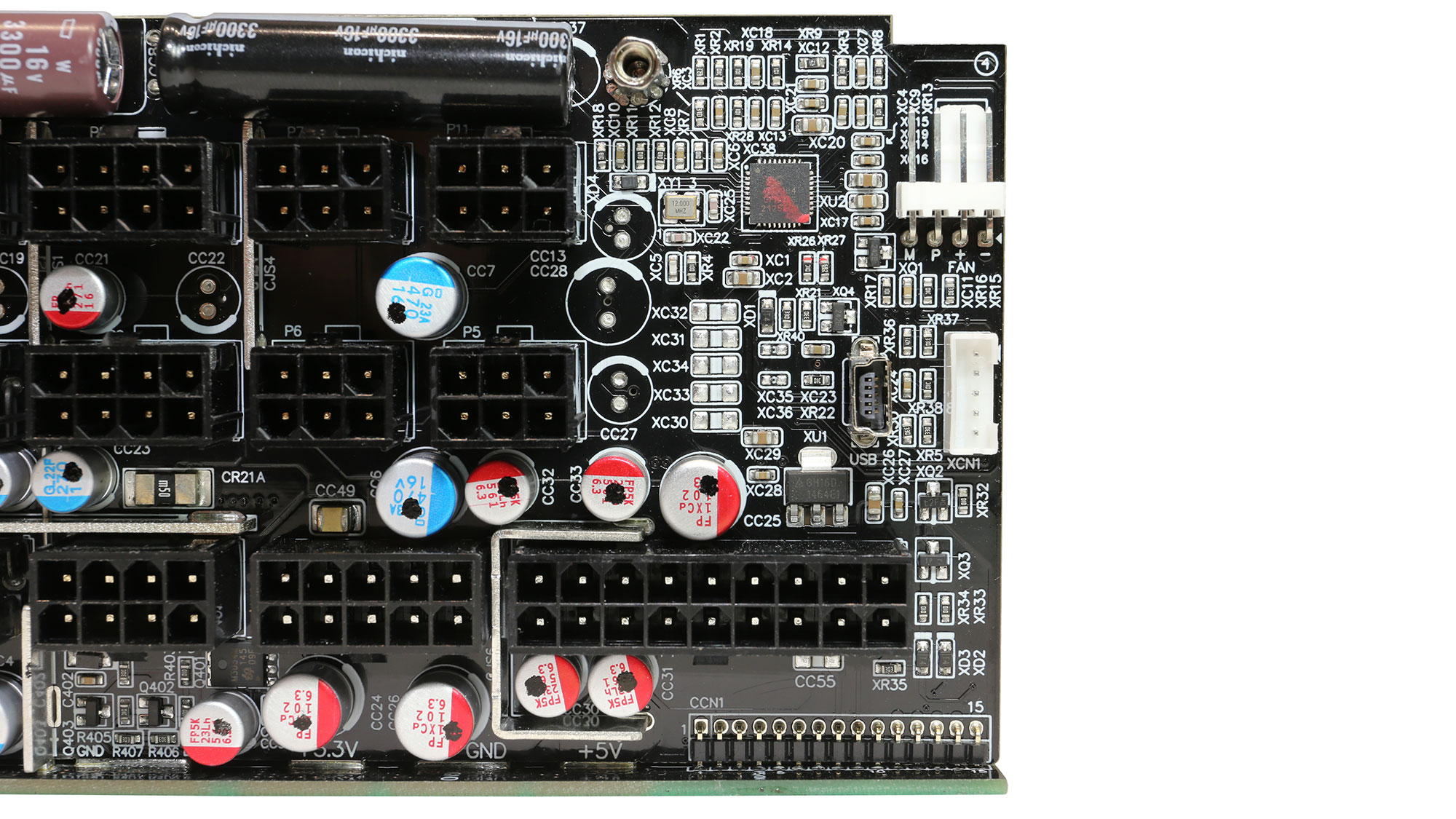
Besides bus bars and shunt resistors, we also find several filtering caps at the face of the modular board.

The main supervisor IC is a Weltrend WT7502R.
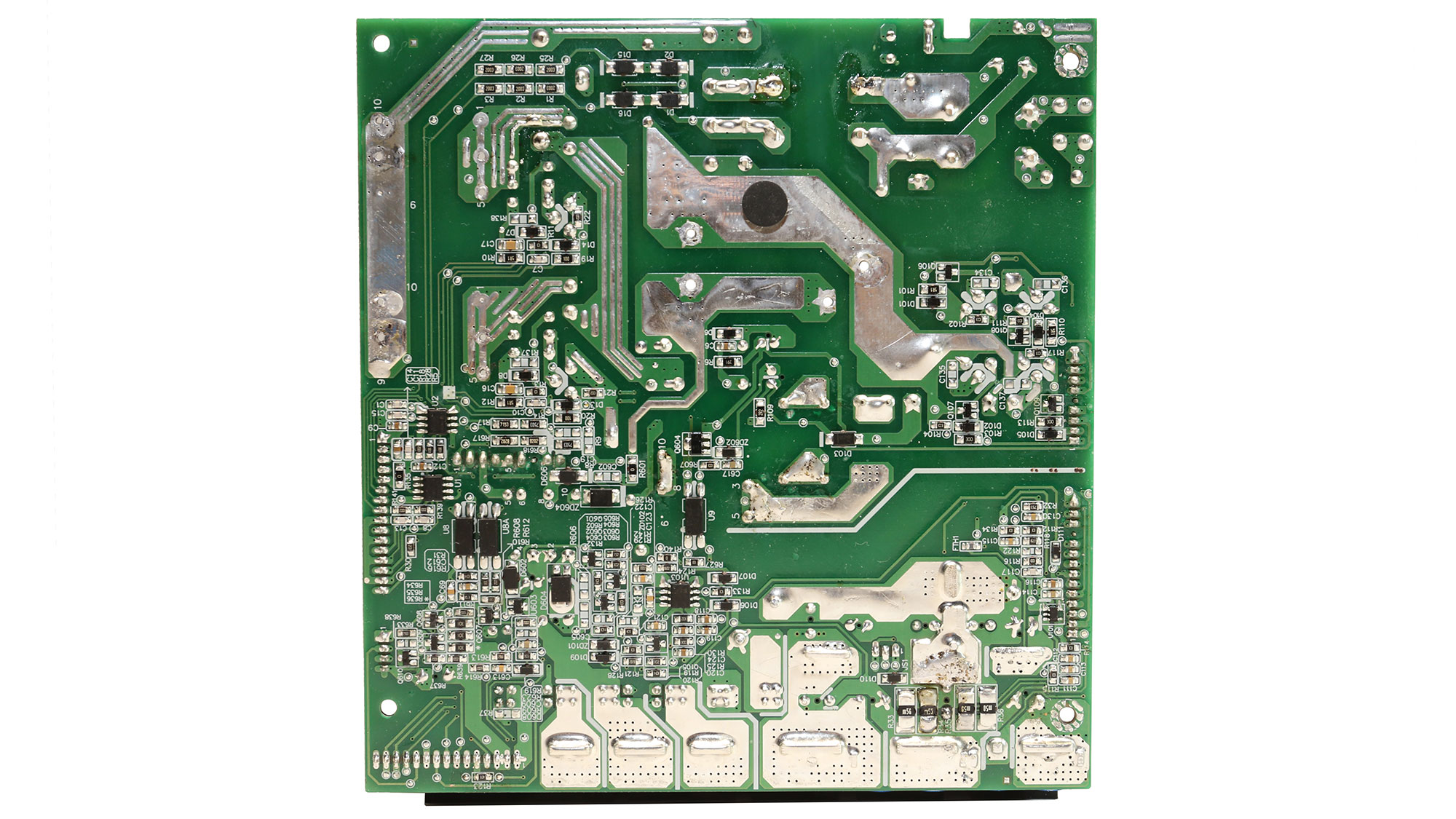
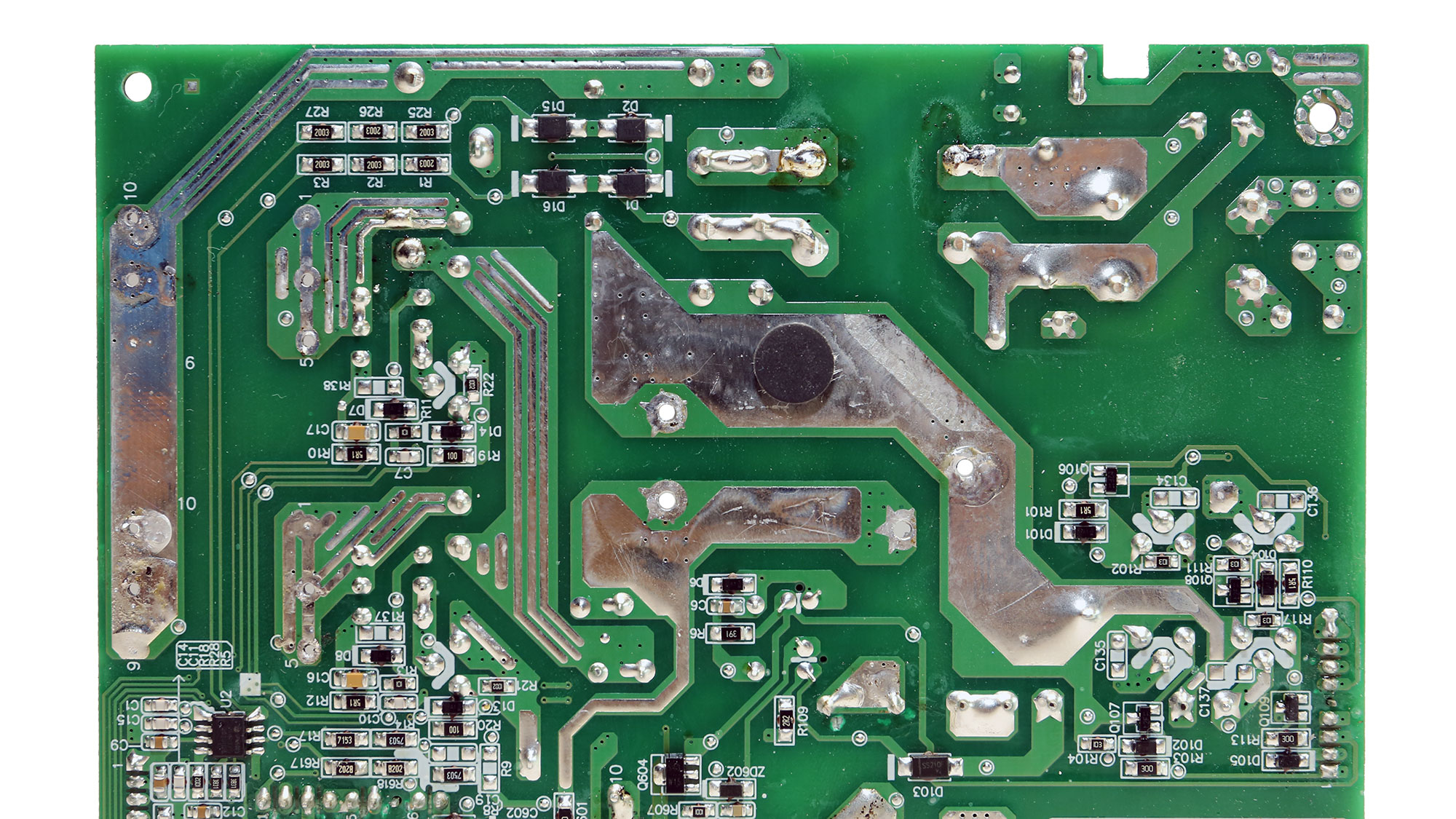

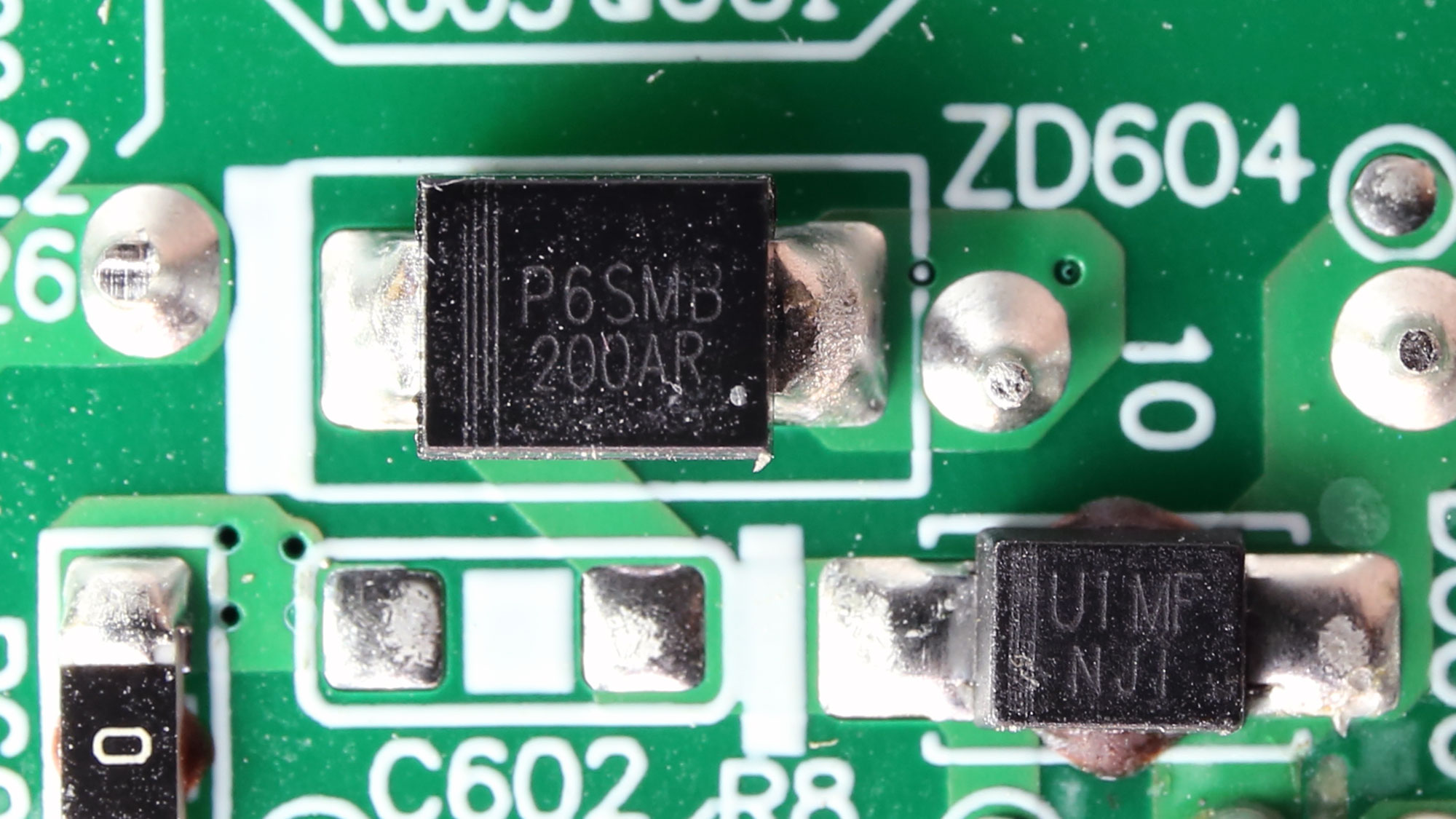
Soldering quality is not the best we have seen by CWT, probably because this was an early sample.



The Powerlogic fan is of high quality, using a hydro-dynamic bearing. MSI could use a larger diameter fan, though, for lower noise output.
MORE: Best Power Supplies
MORE: How We Test Power Supplies
MORE: All Power Supply Content
Current page: Specifications and Part Analysis
Next Page Load Regulation, Hold-Up Time, Inrush & Leakage Current, Efficiency and Noise
Aris Mpitziopoulos is a contributing editor at Tom's Hardware, covering PSUs.
-
tummybunny Thanks for a fantastic and very detailed review. Something that isn't mentioned though is one of the really interesting new features of ATX 3.0.Reply
https://www.techpowerup.com/292563/intel-atx-3-0-16-pin-power-connector-for-pcie-gen5-is-smart-has-four-power-delivery-variants?cp=2
"The 12VHPWR connector has 12 electrical pins and 4 side-band pins, for a total of 16 pins. The side-band pins enable low-fi communication between the power-supply and the graphics card, and two of these pins, labeled "SENSE0" and "SENSE1," let the graphics card know what kind of connector is plugged in, so it can accordingly adjust its power-management."
What difference does this make to GPU performance? Perhaps you could argue it's something better discussed in a GPU review but I would like to hear about it one way or another. -
Hresna Great PSU coverage… although the standard formula I think misses some aspects of a complete review…Reply
For instance this model offers an MSI feature they all “gaming intelligence” via the USB connector… no mention of this in the article or how it works, what it does.
I’ve been a longtime fan of Corsairs ‘i’ series which also use USB as the enabler, for the simple fact that it gives power output readings in hwinfo64 which is a fanstastic tool for dialing in power budgets, overclocks/undervolts, or just… those of us who like numbers and data. I can do without the iCUe software, which thankfully isn’t needed for this.
Does MSI’s GI do that also?
It’s extremely difficult to find PSU models with these sorts of features. At least the ‘i’ thing seems to be catching on and might serve as a semi-reliable indicator between manufacturers. -
halfcharlie ReplyHresna said:For instance this model offers an MSI feature they all “gaming intelligence” via the USB connector… no mention of this in the article or how it works, what it does.
What's this on the first page then?
"there is compatibility with the MSI Gaming Intelligence application, through which you can adjust several settings, like the fan's speed and toggle on/off the single +12V mode while monitoring the PSU's vital functions and power delivery. " Also google exists. -
CheckYourFacts The Author asserts: "The four main FETs are installed into a full-bridge topology. " Where does he get that information from when the vendor says its a "LLC Half Bridge Topology with DC-DC module design "Reply
https://www.msi.com/Power-Supply/MEG-Ai1000P-PCIE5 -
bignastyid Reply
Considering Aris is one of the top experts/reviewers in PSUs and he did a teardown. I'd believe him over the advertised specs any day.CheckYourFacts said:The Author asserts: "The four main FETs are installed into a full-bridge topology. " Where does he get that information from when the vendor says its a "LLC Half Bridge Topology with DC-DC module design "
https://www.msi.com/Power-Supply/MEG-Ai1000P-PCIE5 -
CheckYourFacts Replybignastyid said:Considering Aris is one of the top experts/reviewers in PSUs and he did a teardown. I'd believe him over the advertised specs any day.
This is not about the authors reputation, which i know nothing about. It is about journalistic work ethics, his claim is in clear contradiction to the vendor claims. -
bignastyid Reply
He opened it up and wrote what he found. If anything that would put the companies ethics in question not the reviewers.CheckYourFacts said:This is not about the authors reputation, which i know nothing about. It is about journalistic work ethics, his claim is in clear contradiction to the vendor claims. -
Lutfij Reply
You might want to do a bit of digging and see what Kingston did within the last decade. If you can't find it, I'll help you;CheckYourFacts said:This is not about the authors reputation, which i know nothing about. It is about journalistic work ethics, his claim is in clear contradiction to the vendor claims.
Kingston sent out SSD's to practically every reviewer known to the (tech)community and once sales drove up to remove practically all units off the shelves, people all stated how the speeds weren't the same as seen by reviewers in spite of the advertised material stating otherwise. A further digging by TekSyndicate/Level1 found out about how cherry picked samples were handed out to help garner a better image.
That being said, please stop with the needless jabbing, the question falls onto the brand that sent the review sample out, not the person who opened up the unit to report what he'd seen. You're also talking about Aris, here. You're sneezing towards the wind.
If you believe everything that the brand's marketing material states, then AIO coolers MSI released were the best coolers in the world, not the market, the world. -
Hresna Reply
Okay so I missed that brief description.halfcharlie said:What's this on the first page then?
"there is compatibility with the MSI Gaming Intelligence application, through which you can adjust several settings, like the fan's speed and toggle on/off the single +12V mode while monitoring the PSU's vital functions and power delivery. " Also google exists.
And yes google exists, but my point was, in a review for something, if you’re going to mention a unique feature - something that sets it apart from its competition - might be worthwhile including a fulsome description and reviewing its functionality.
So I retract that it wasn’t described at all.